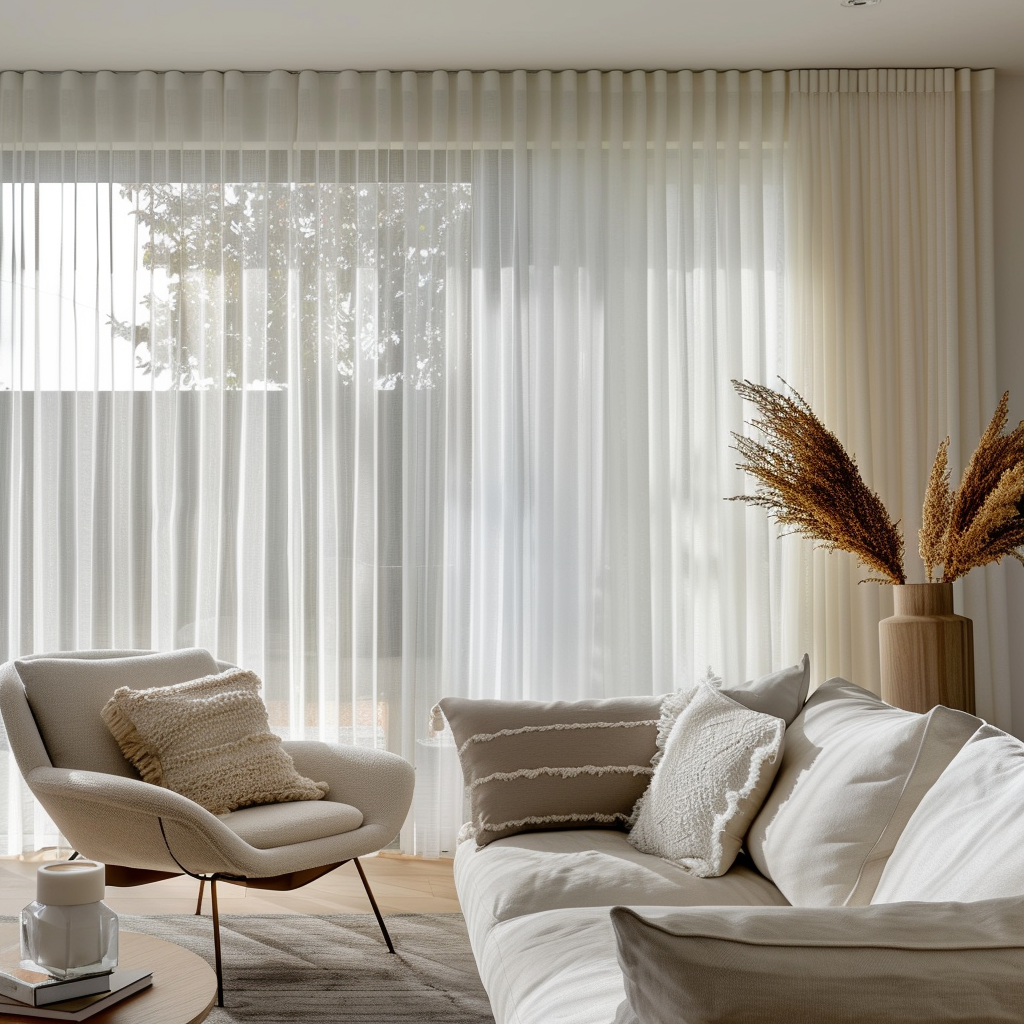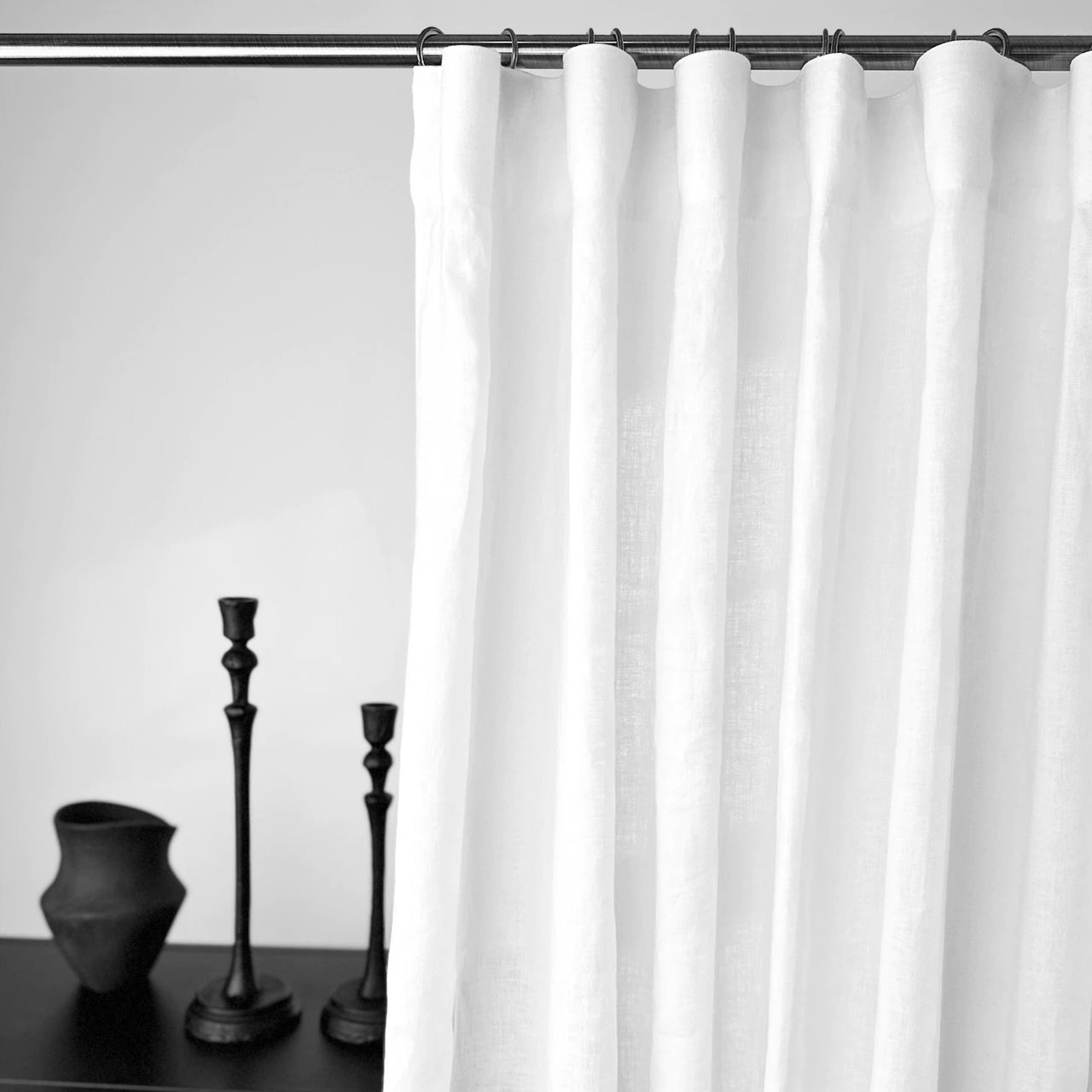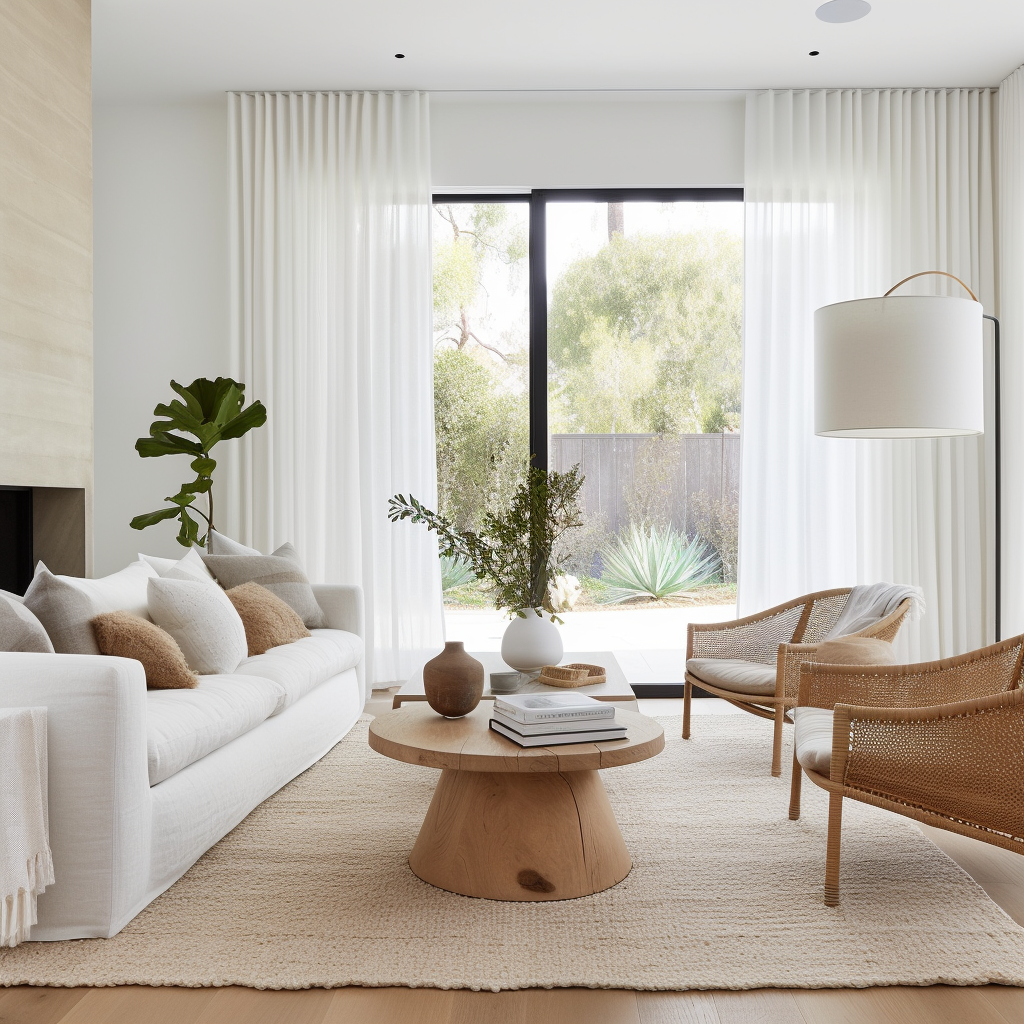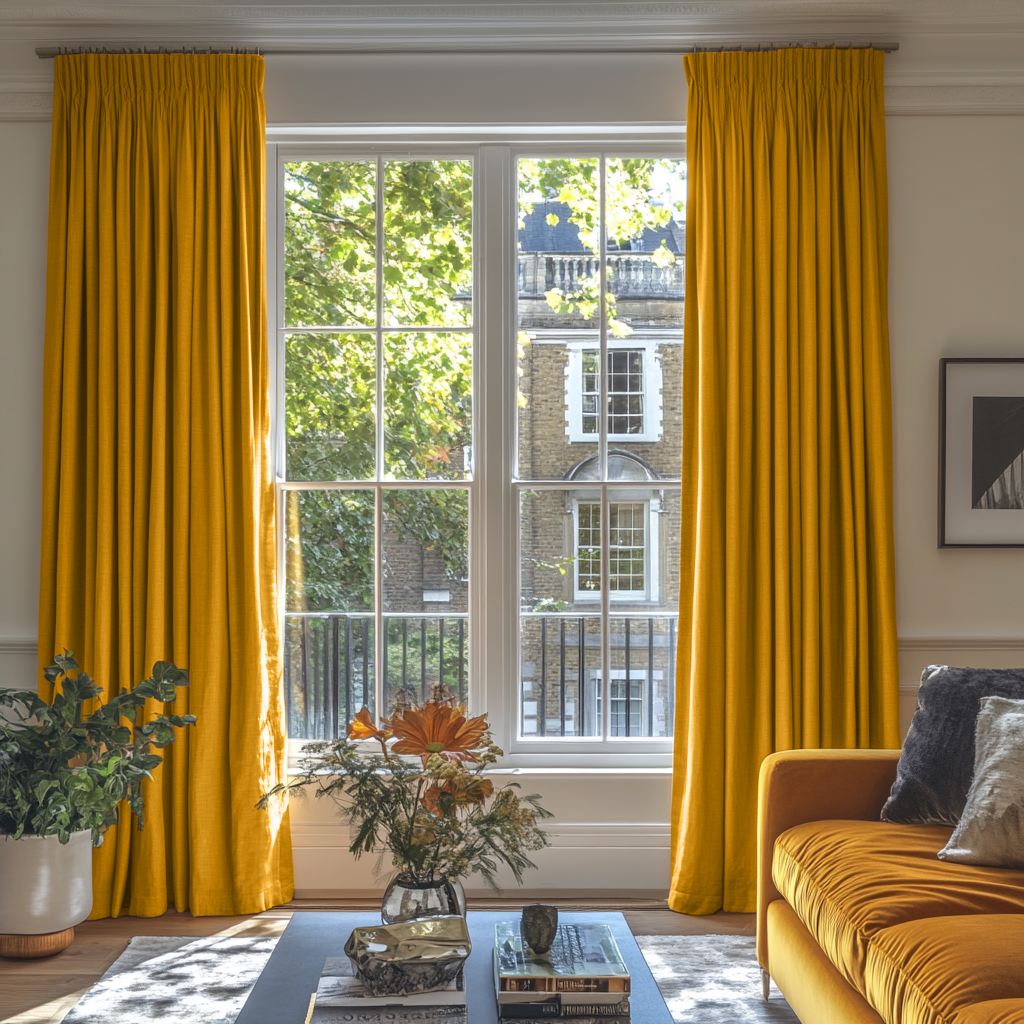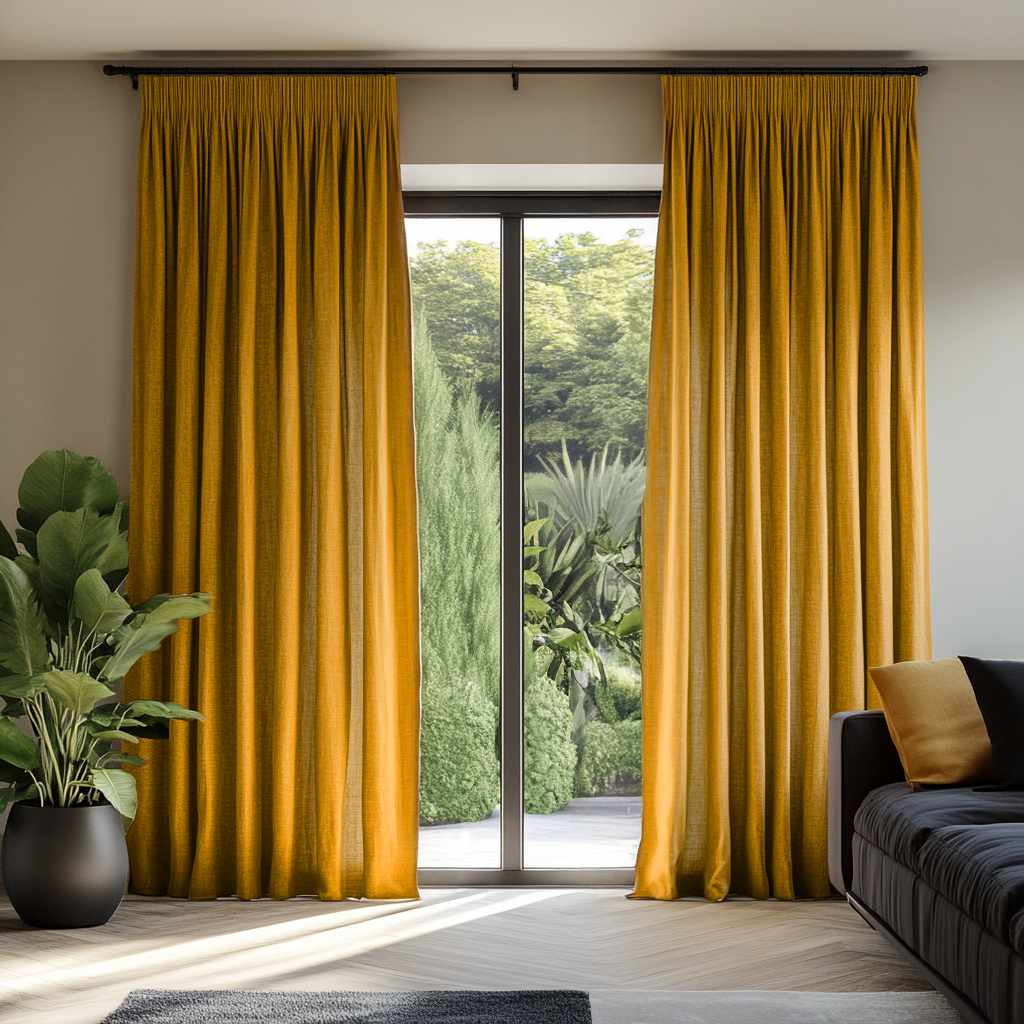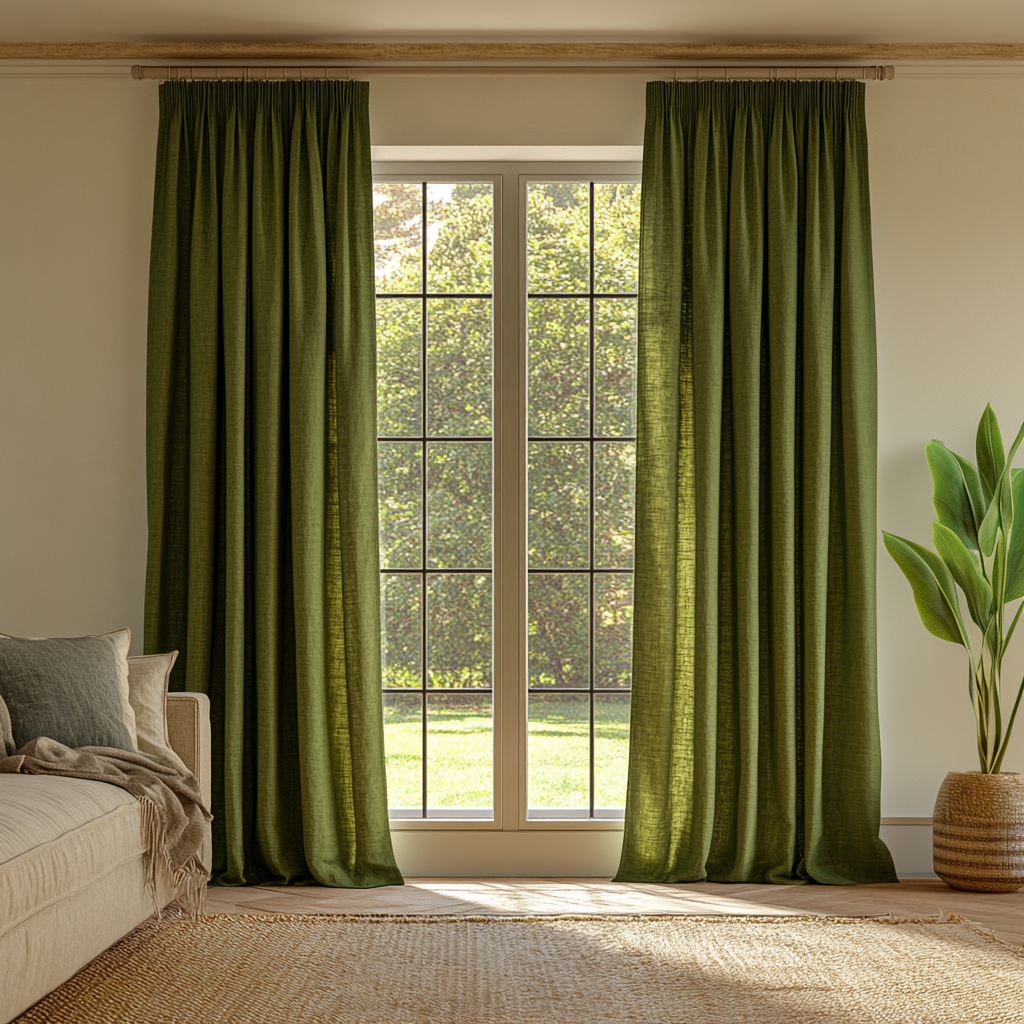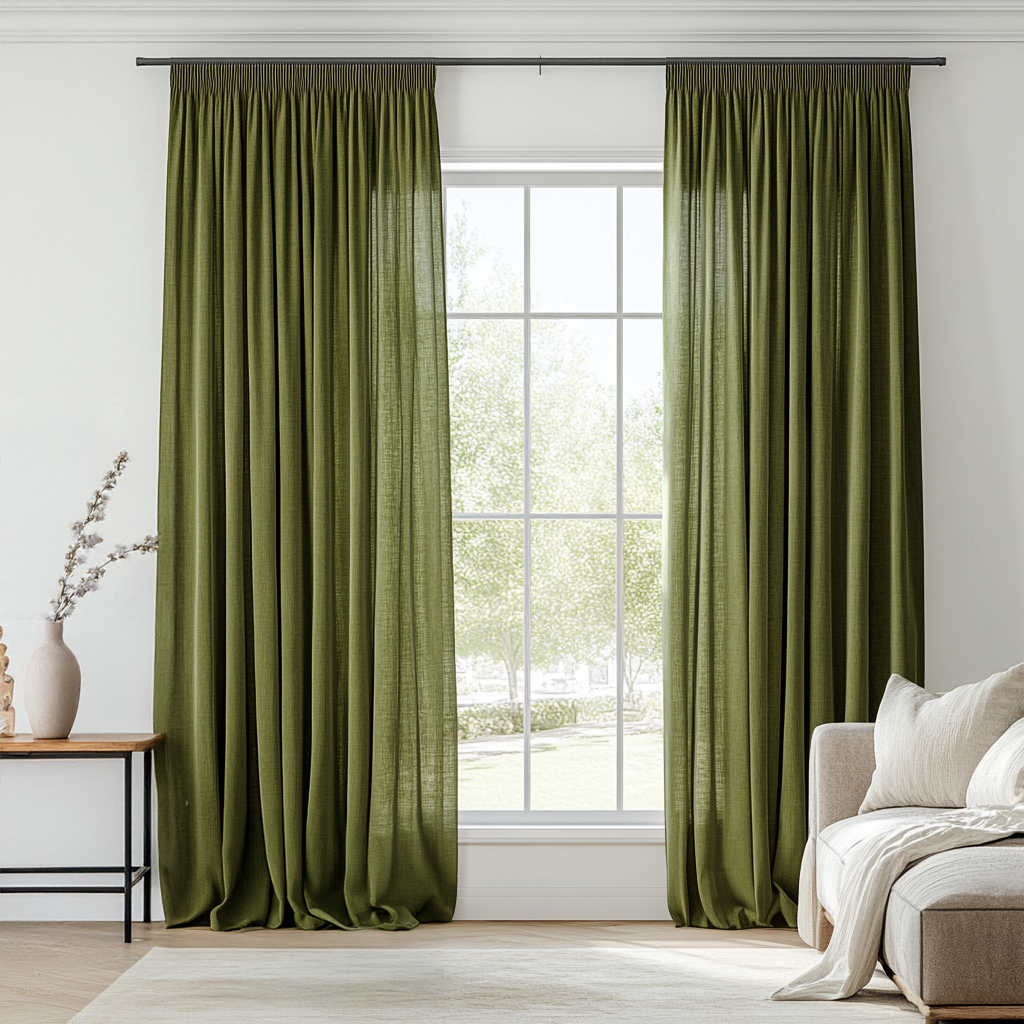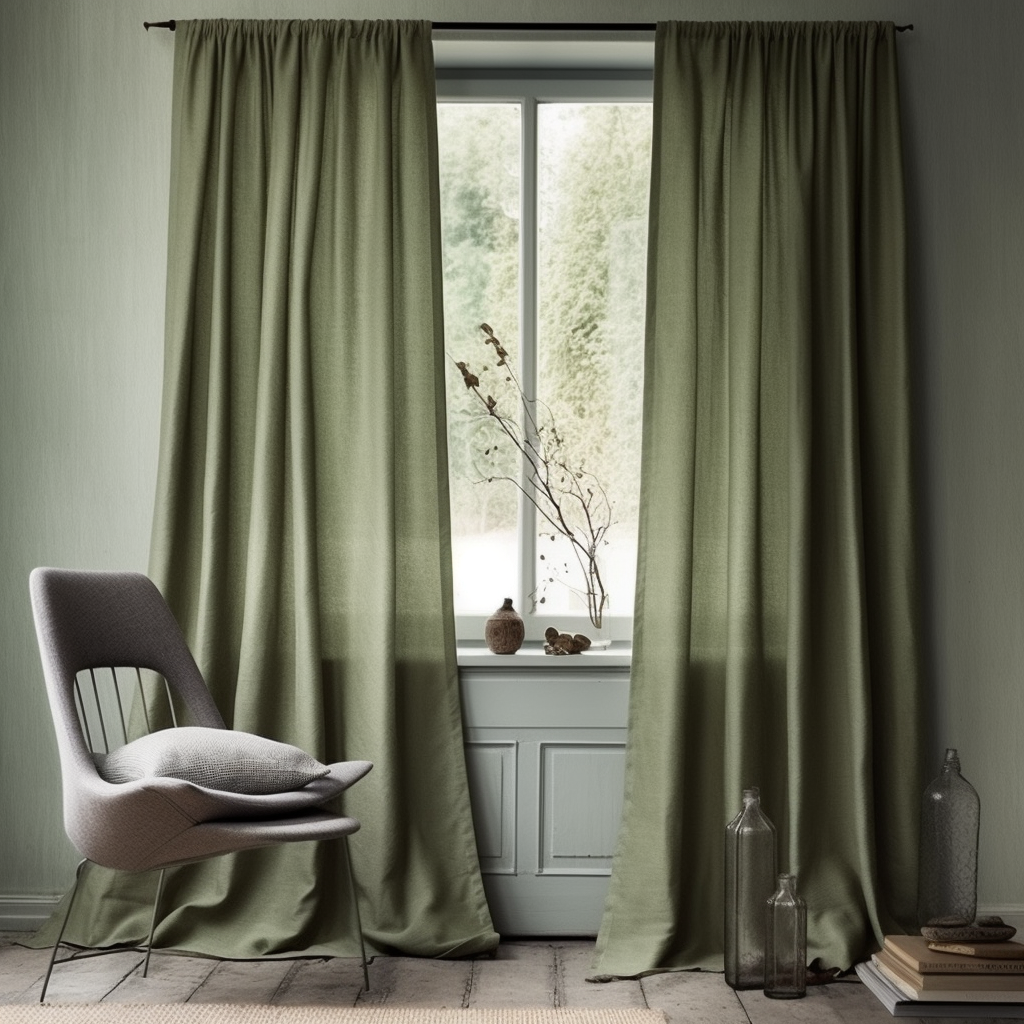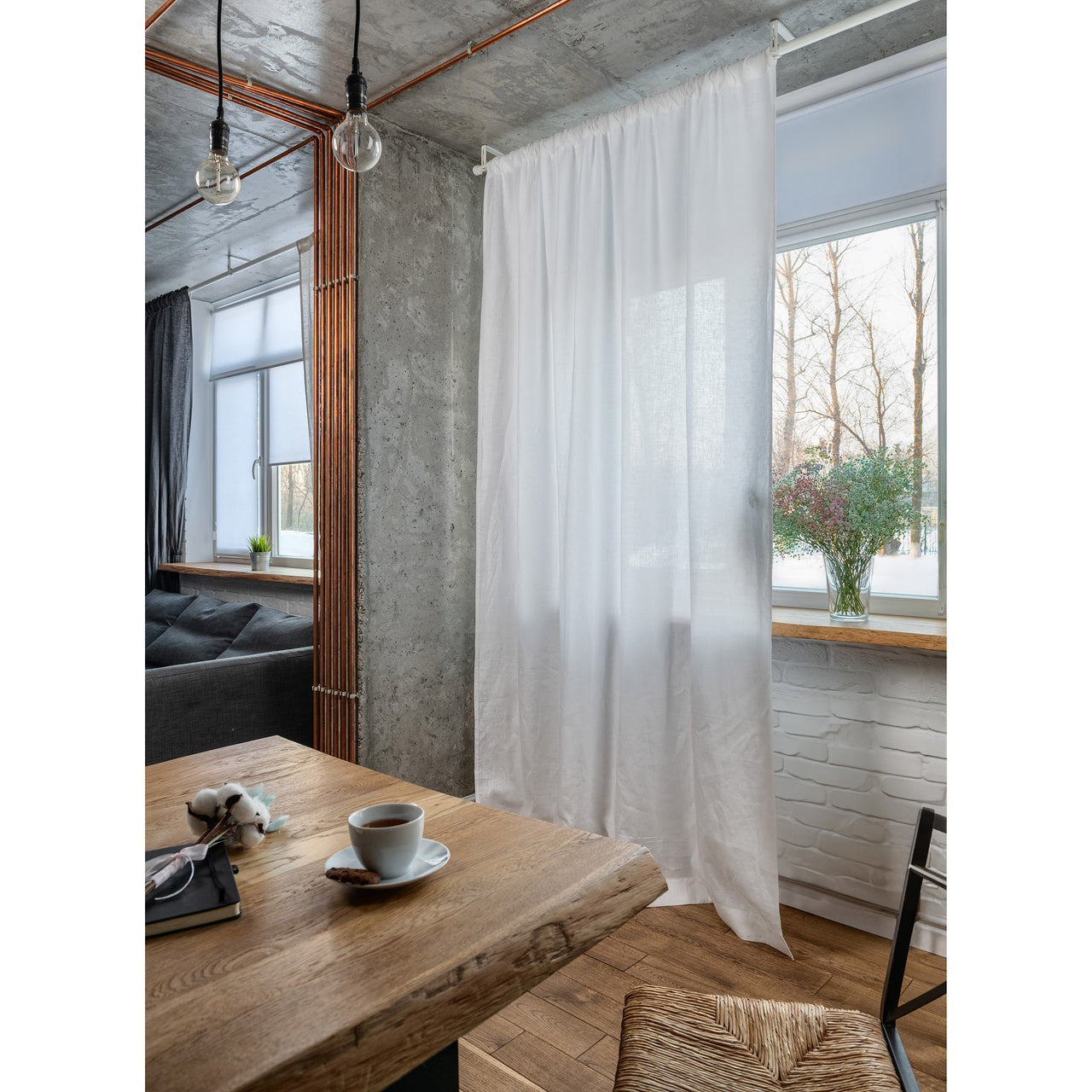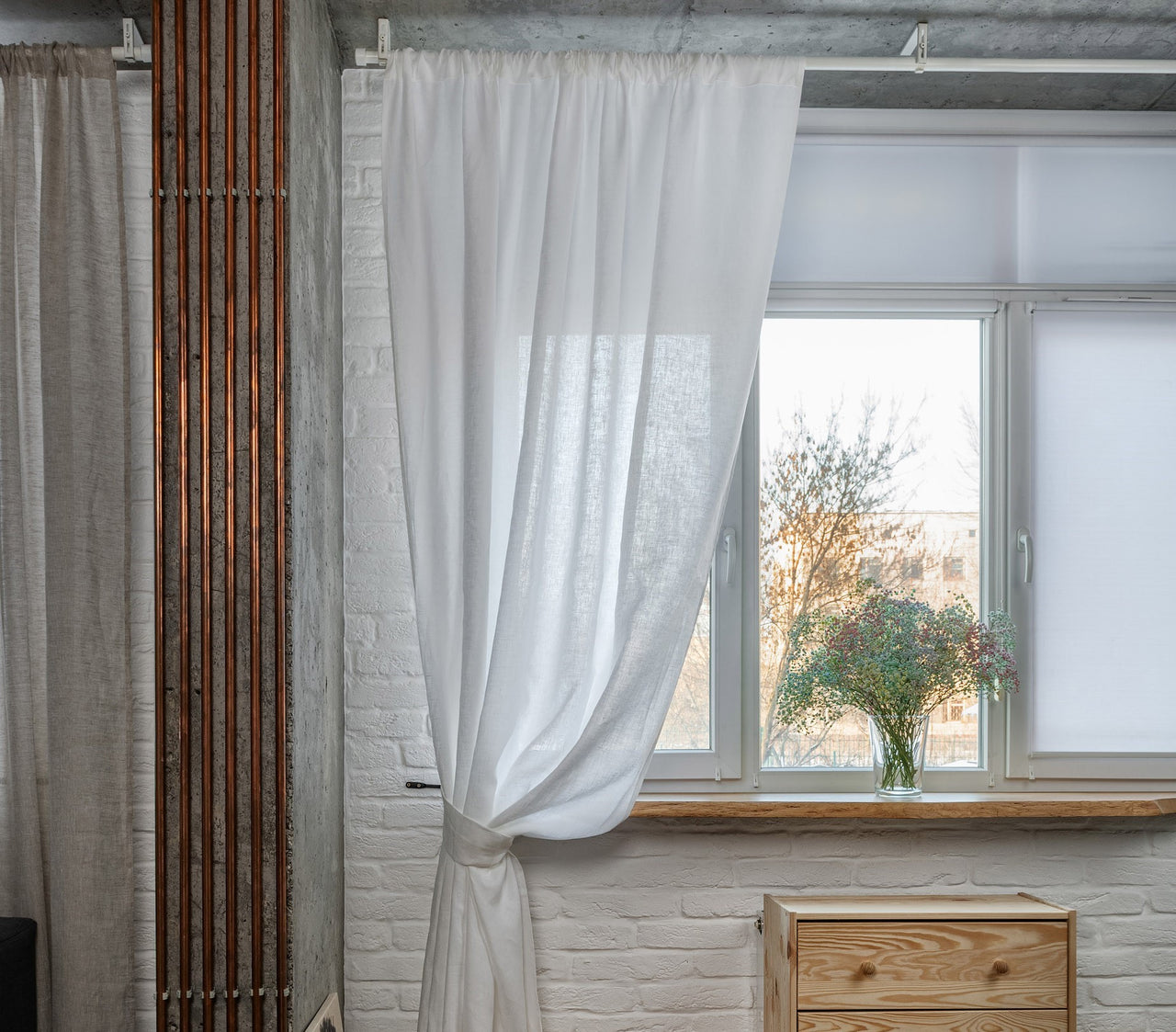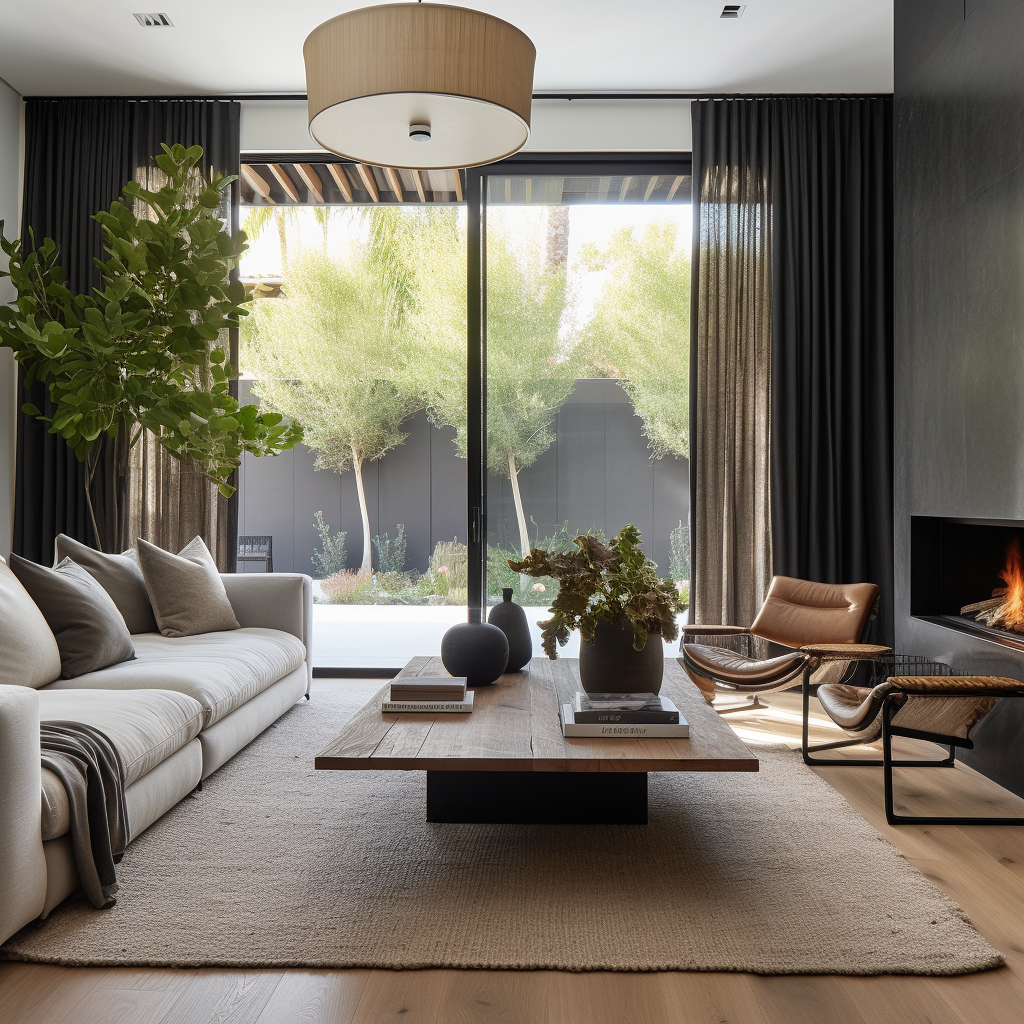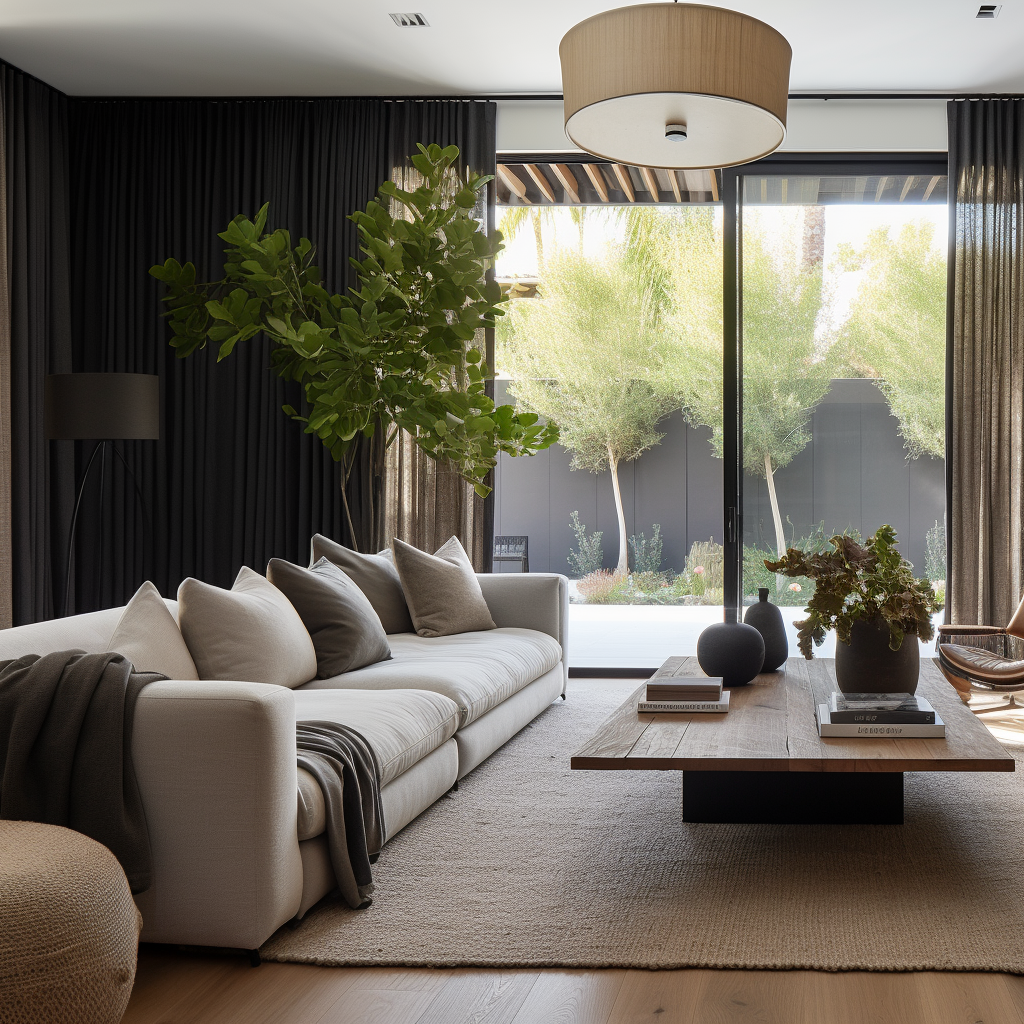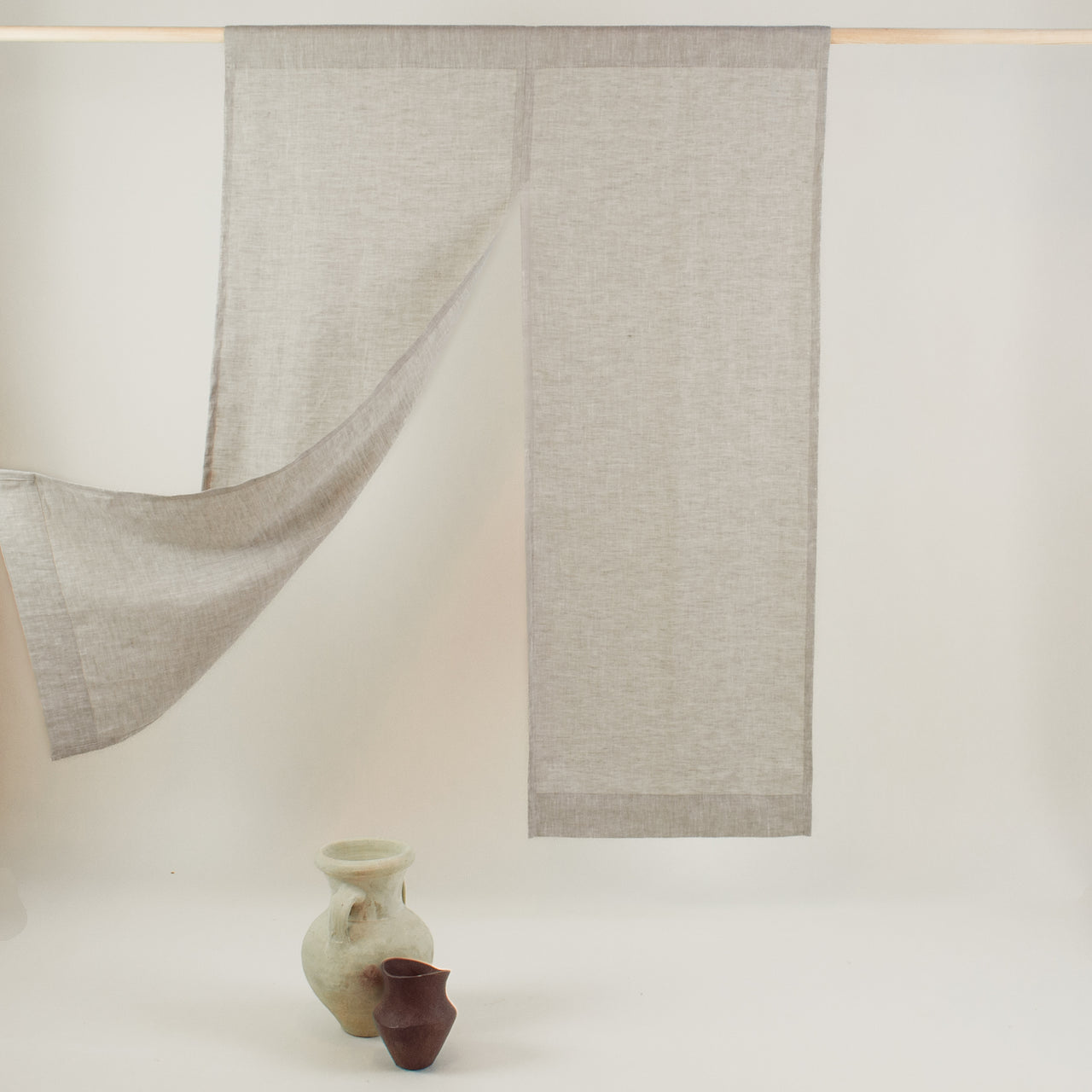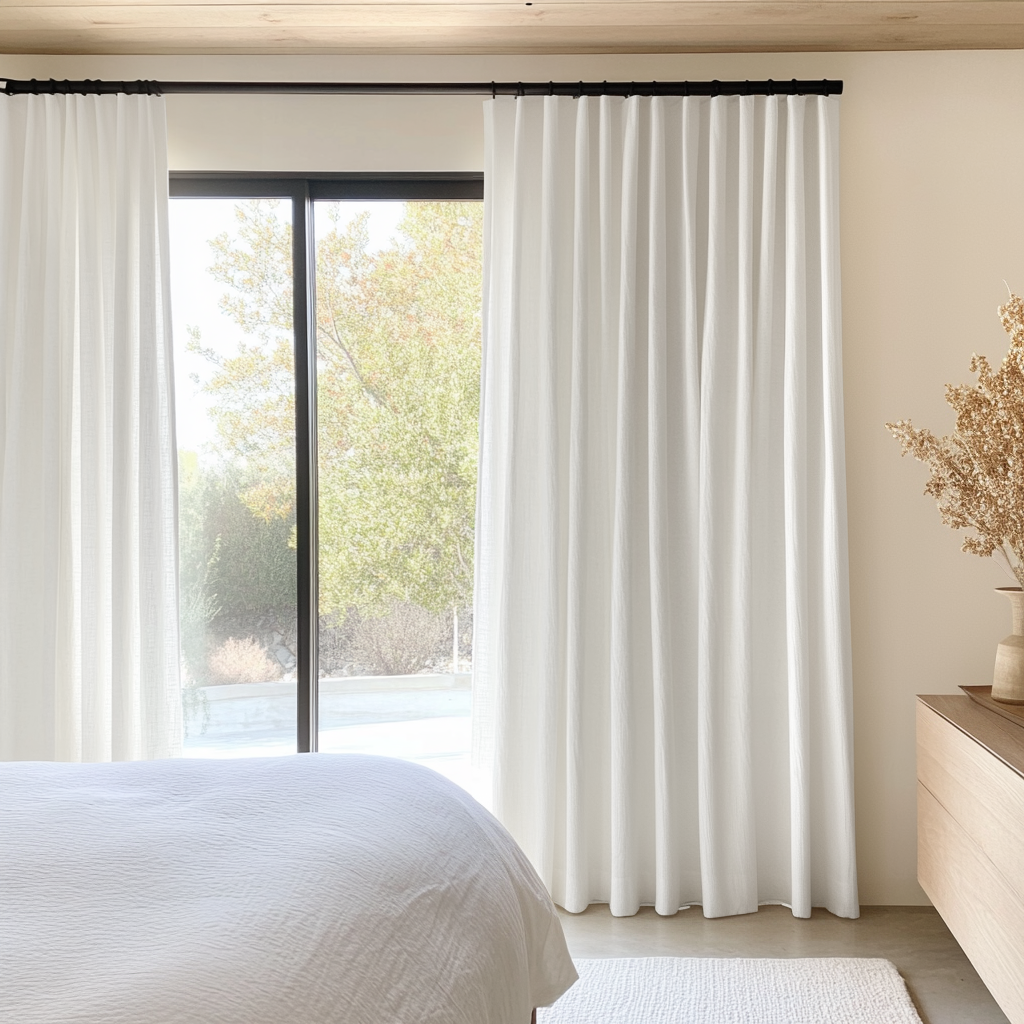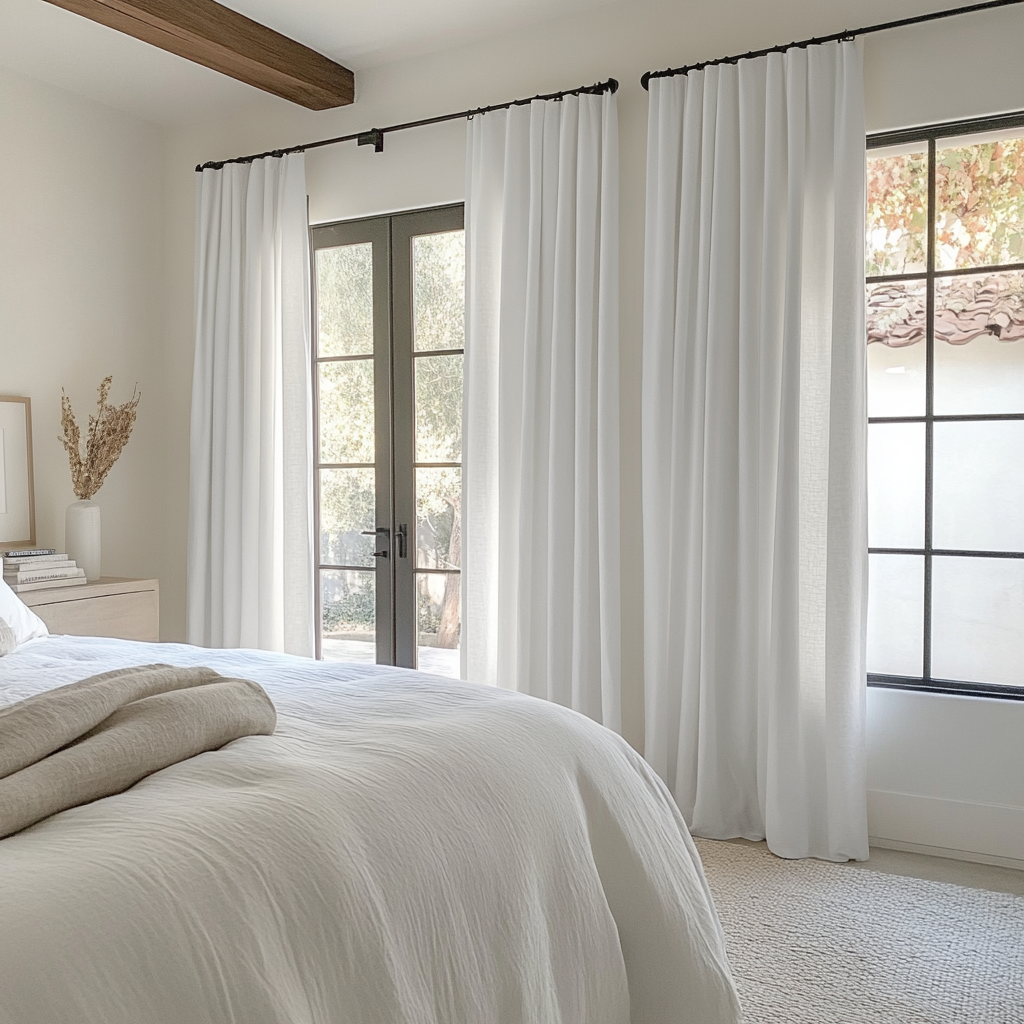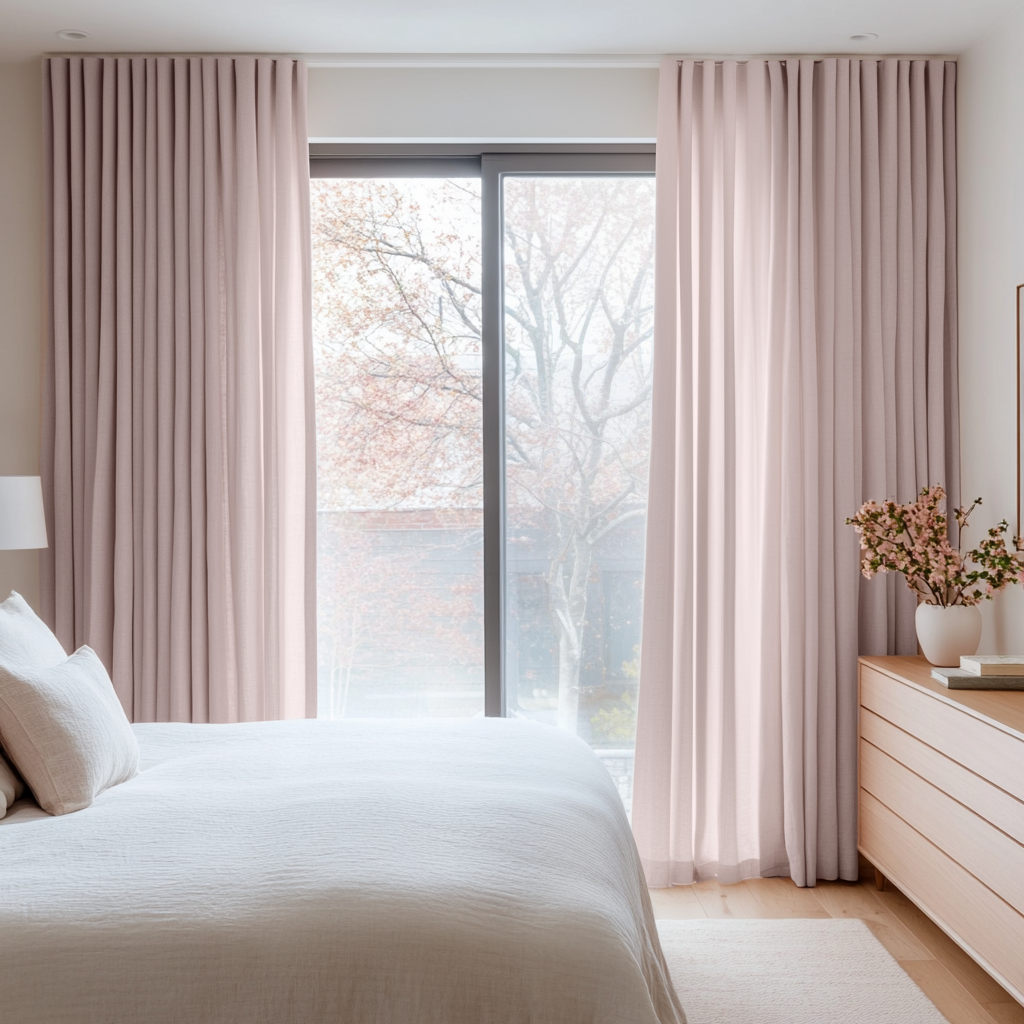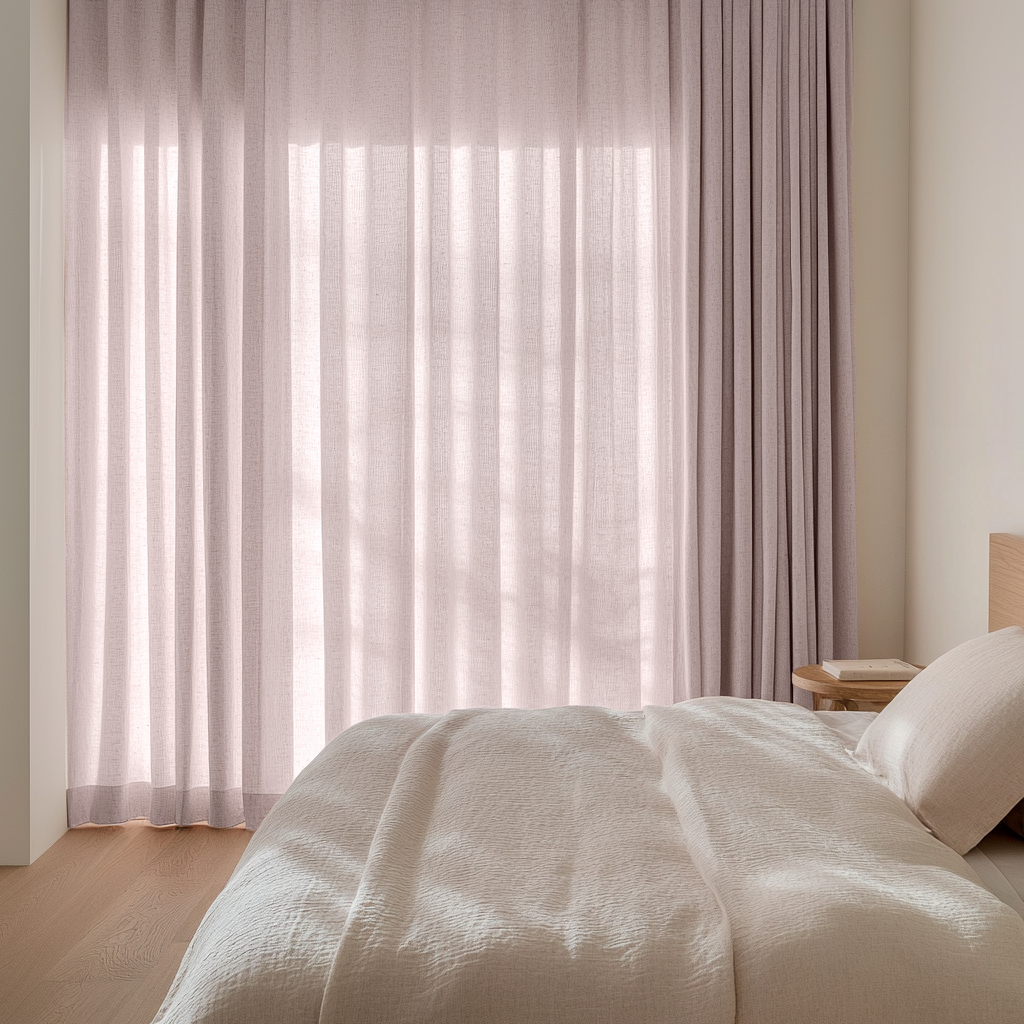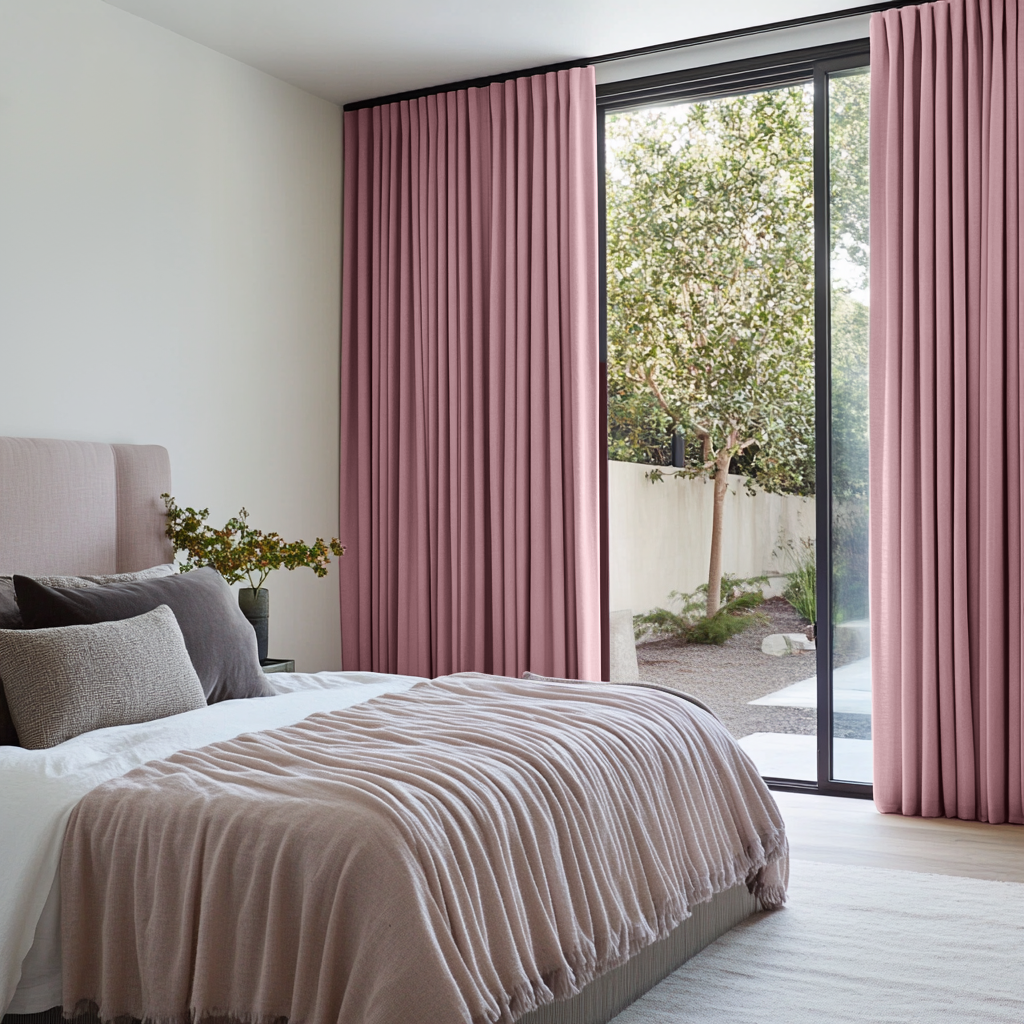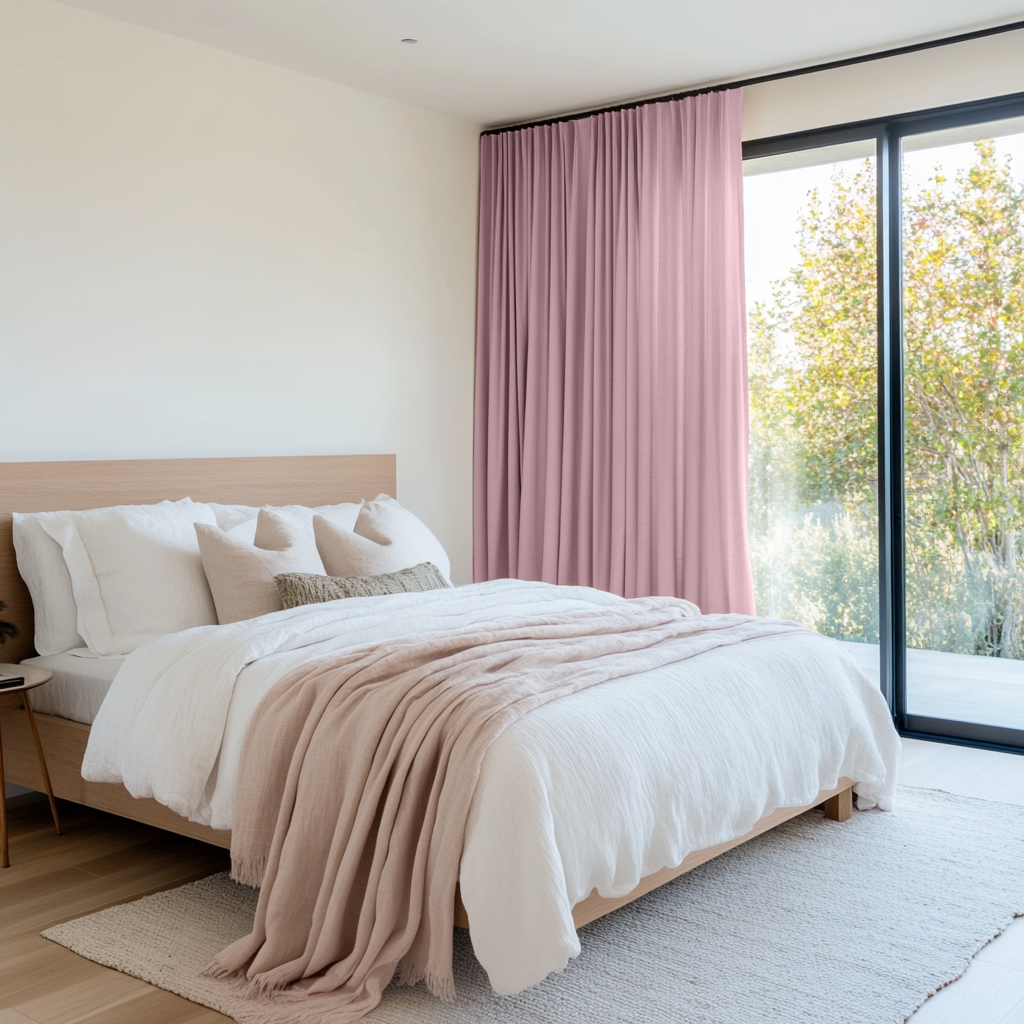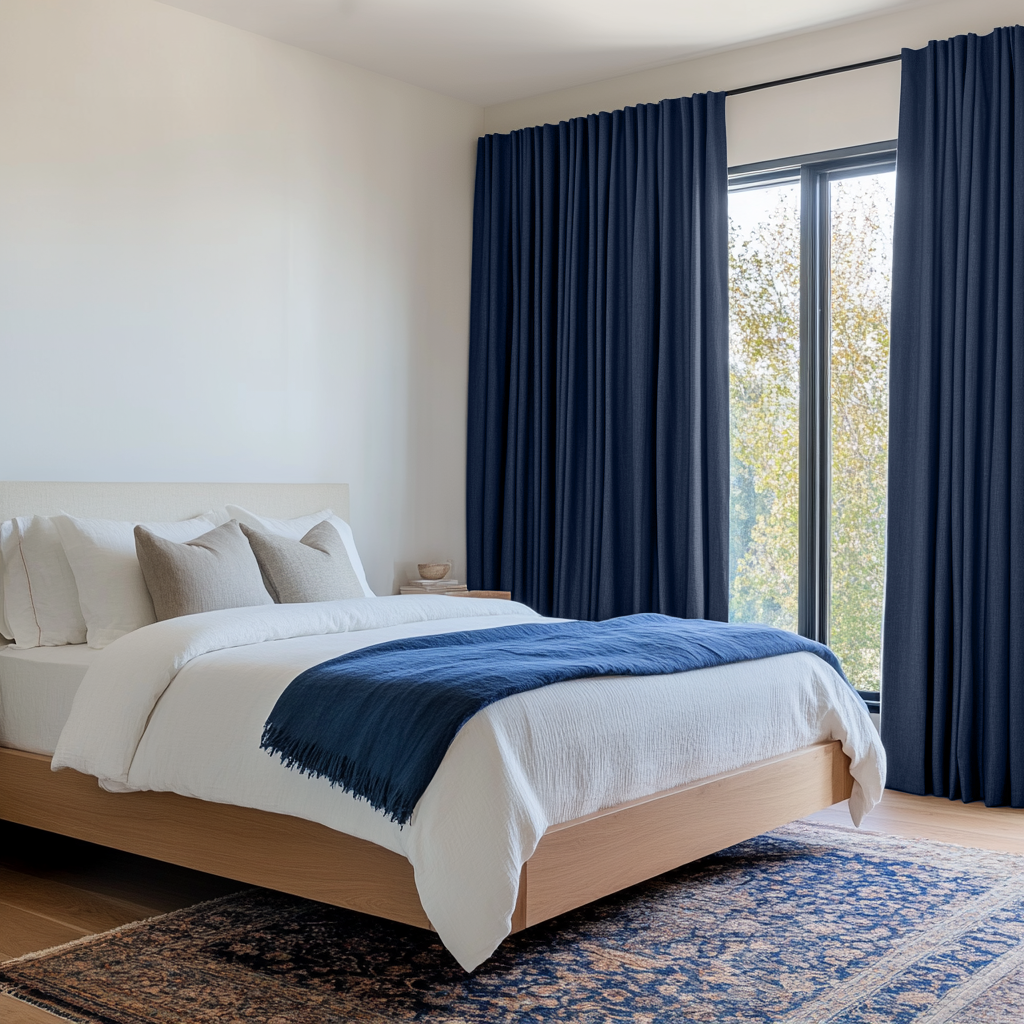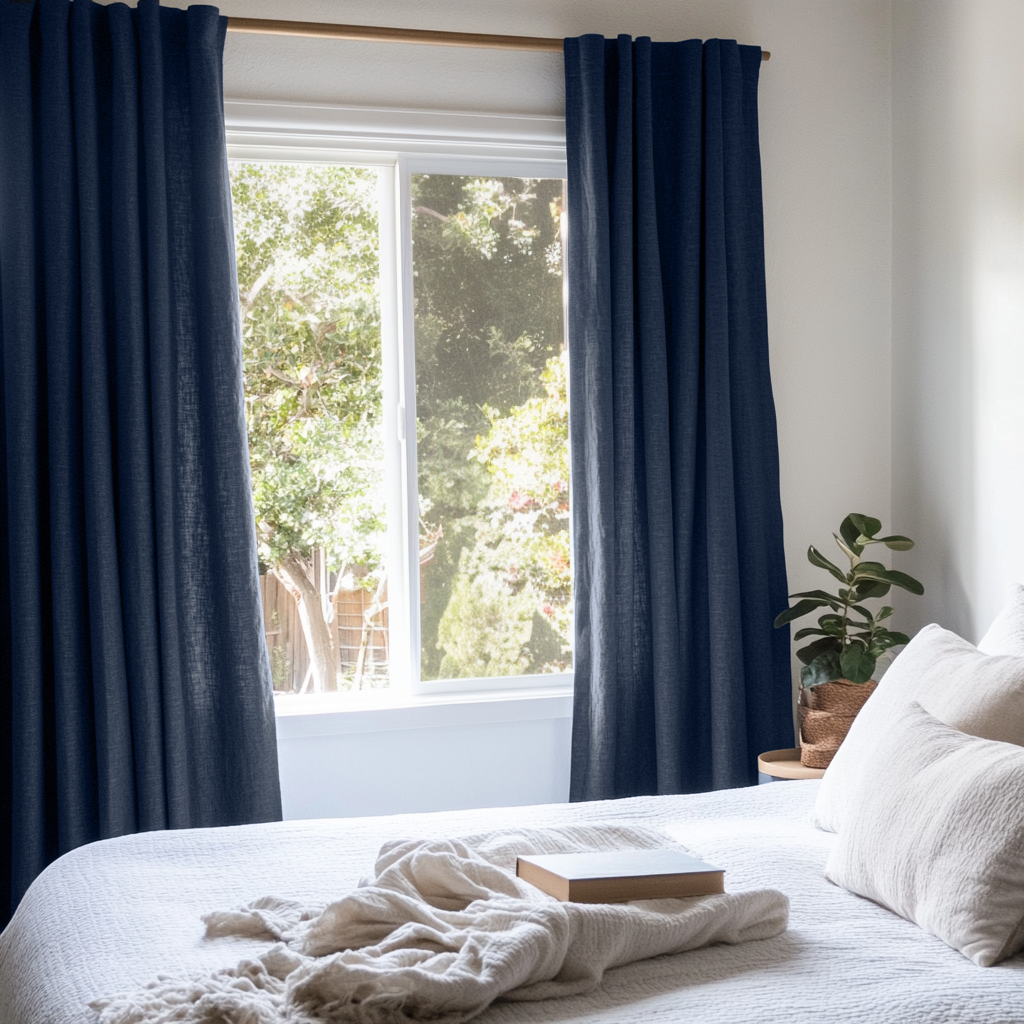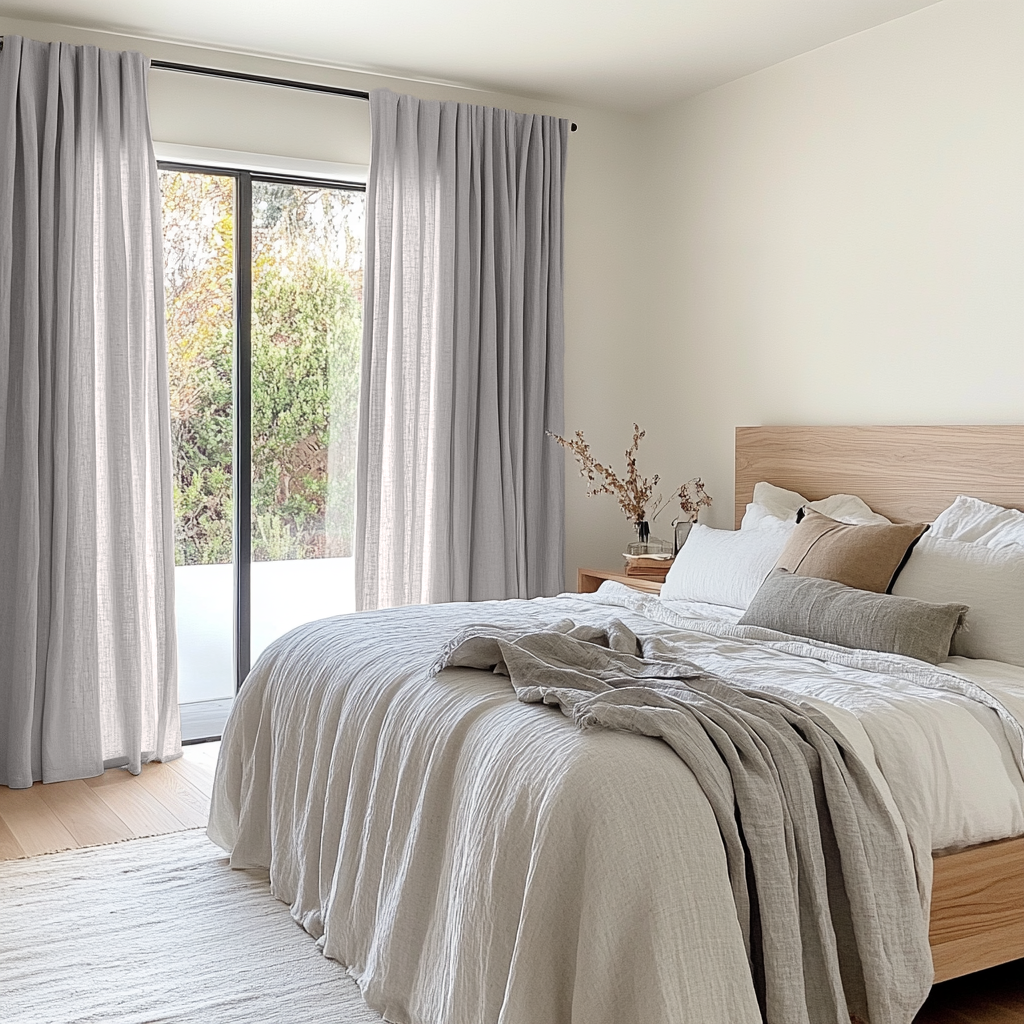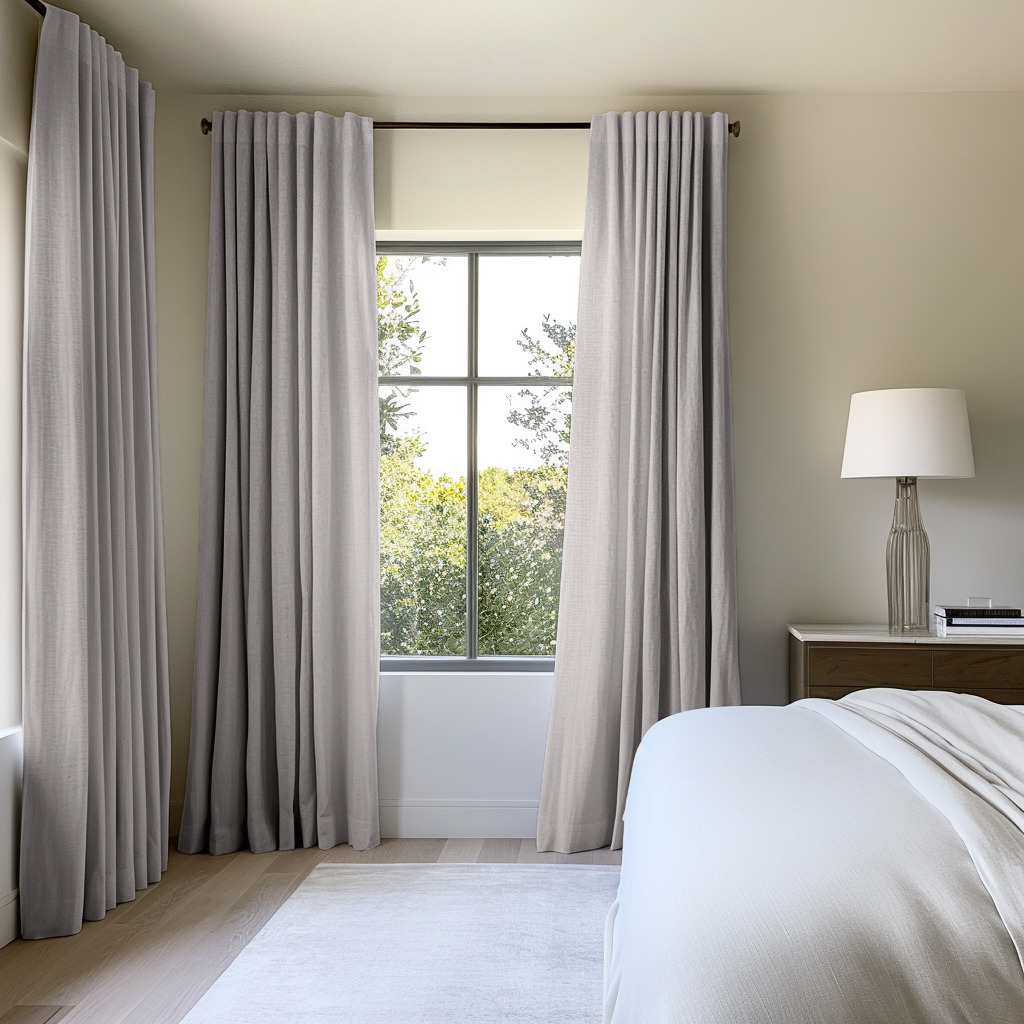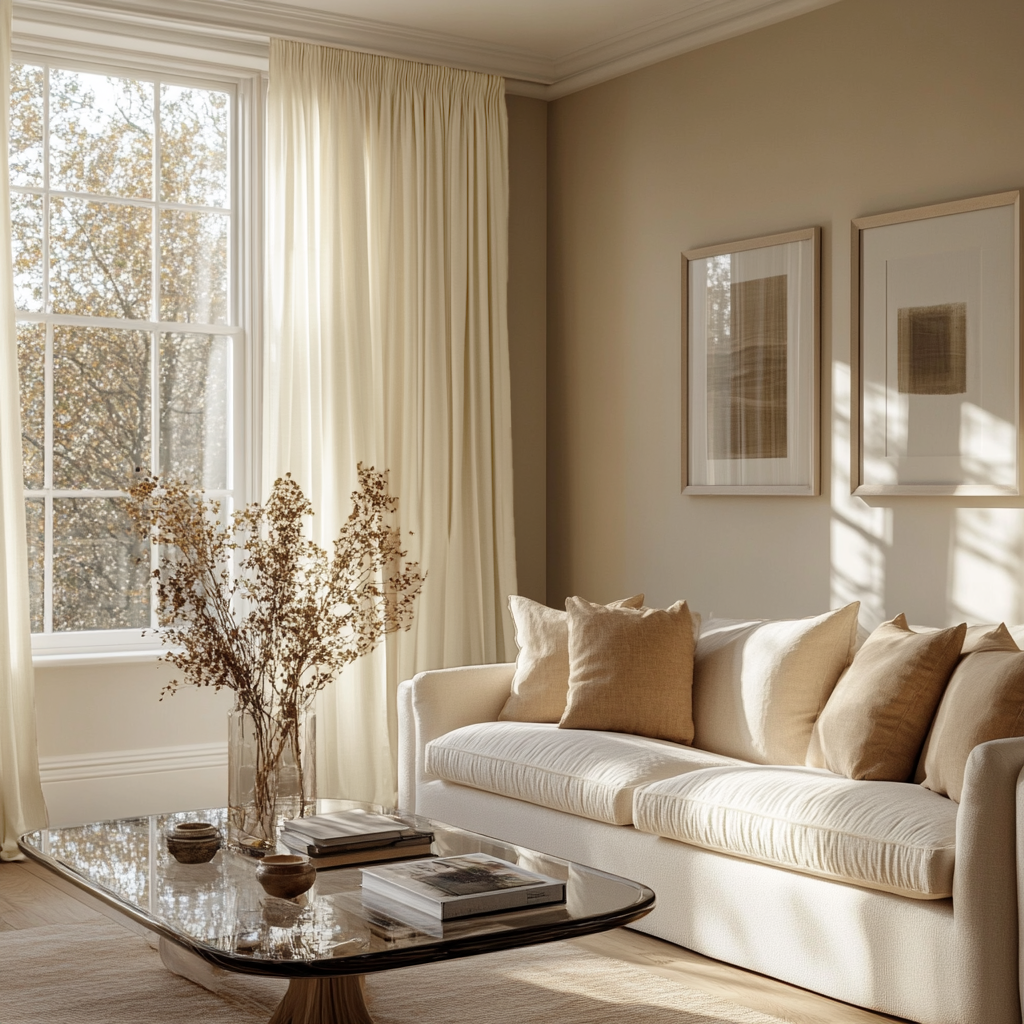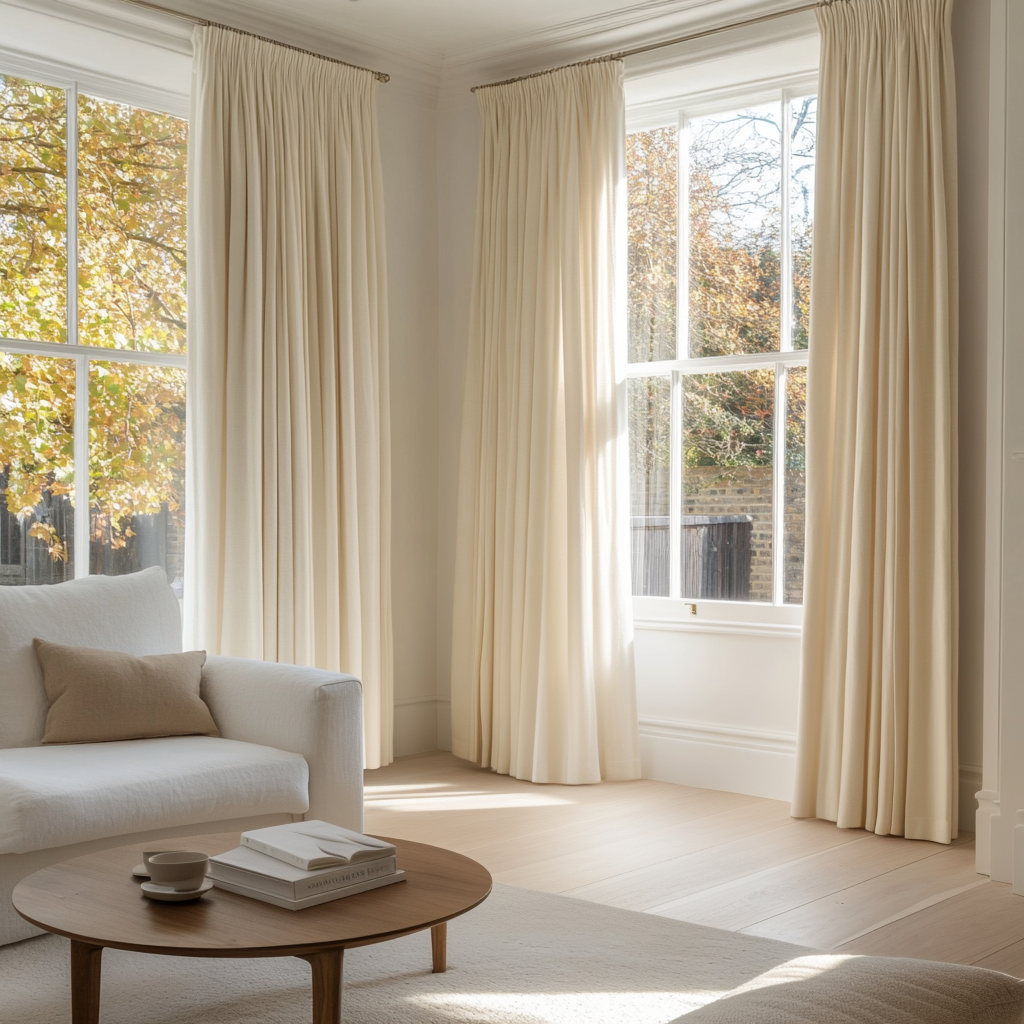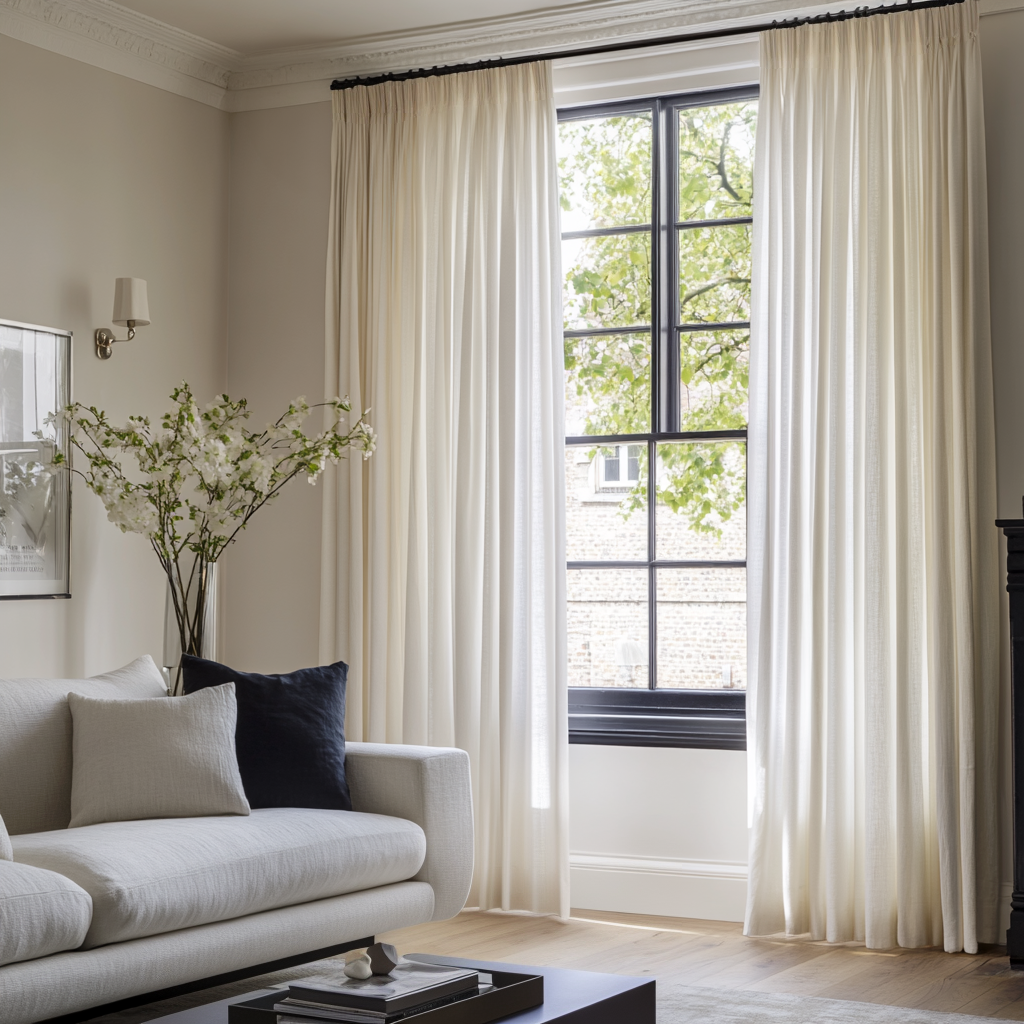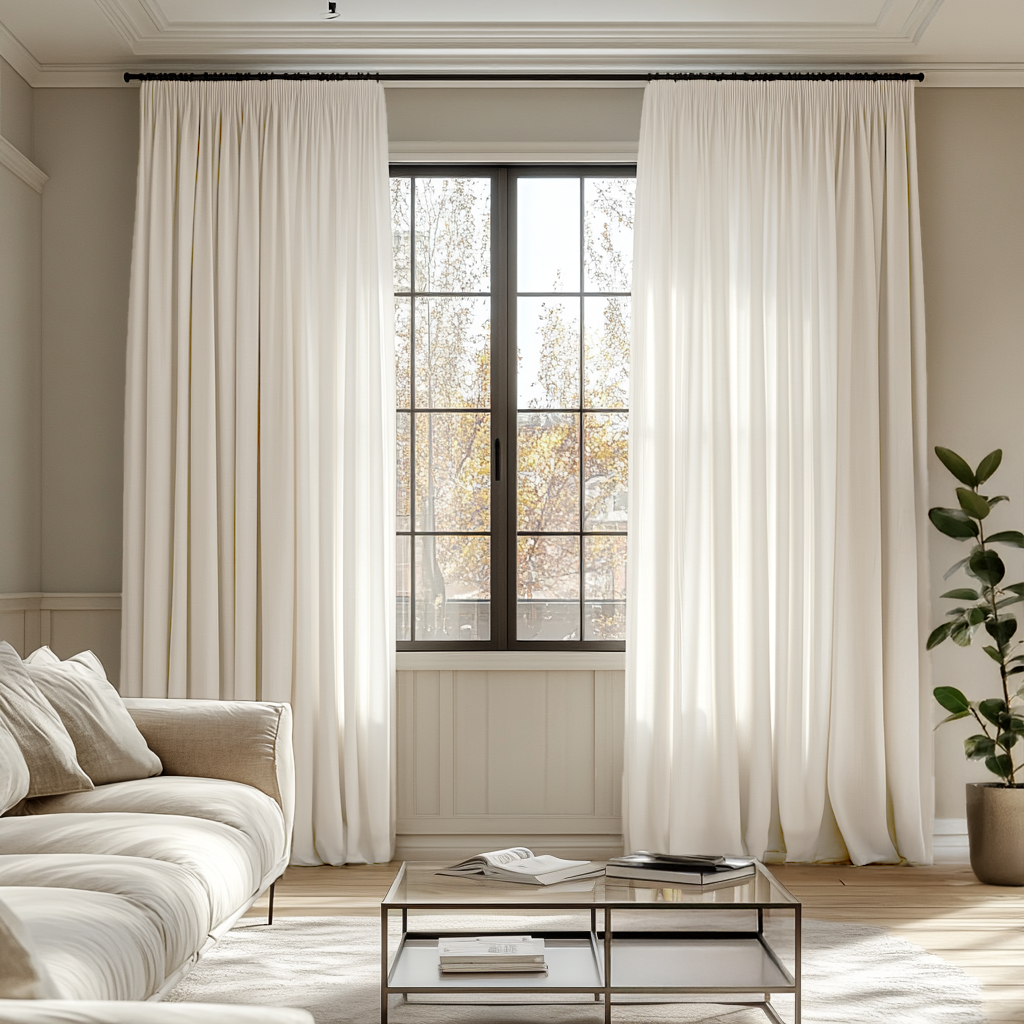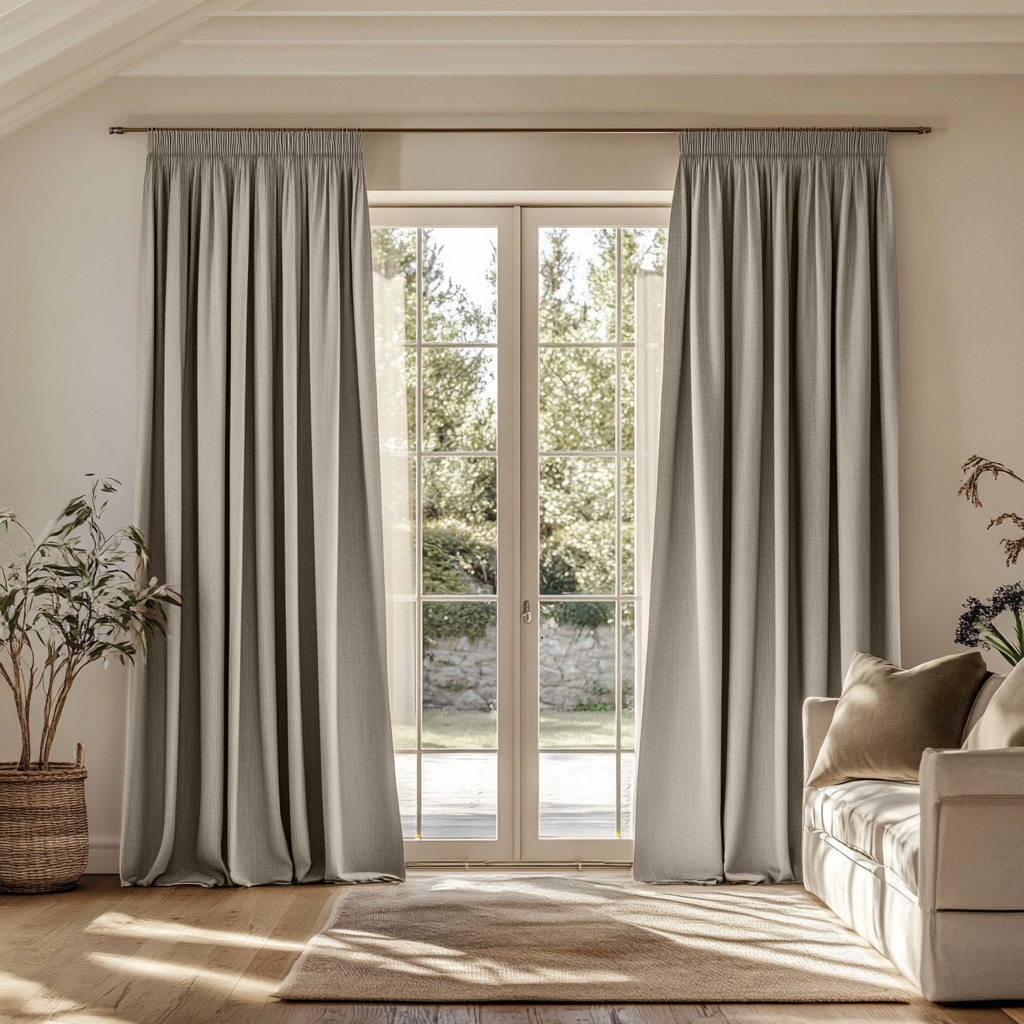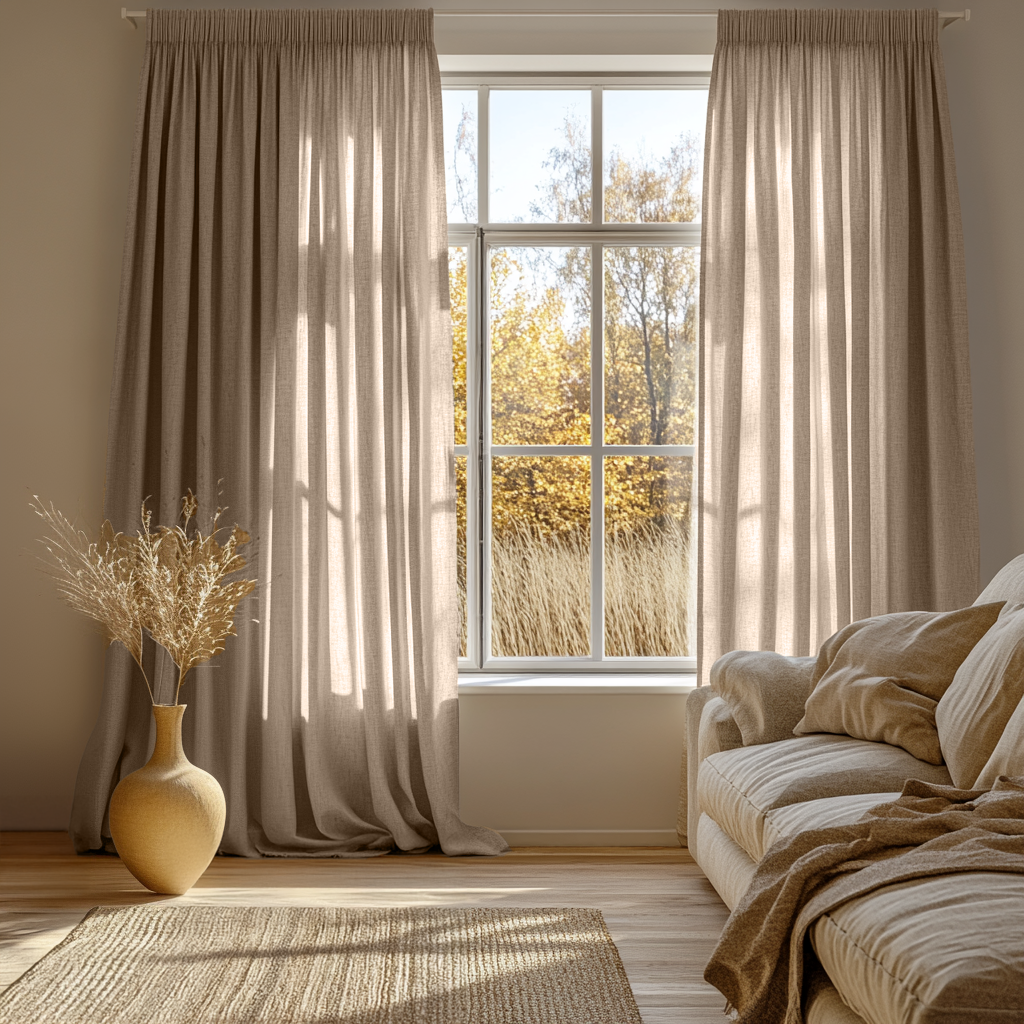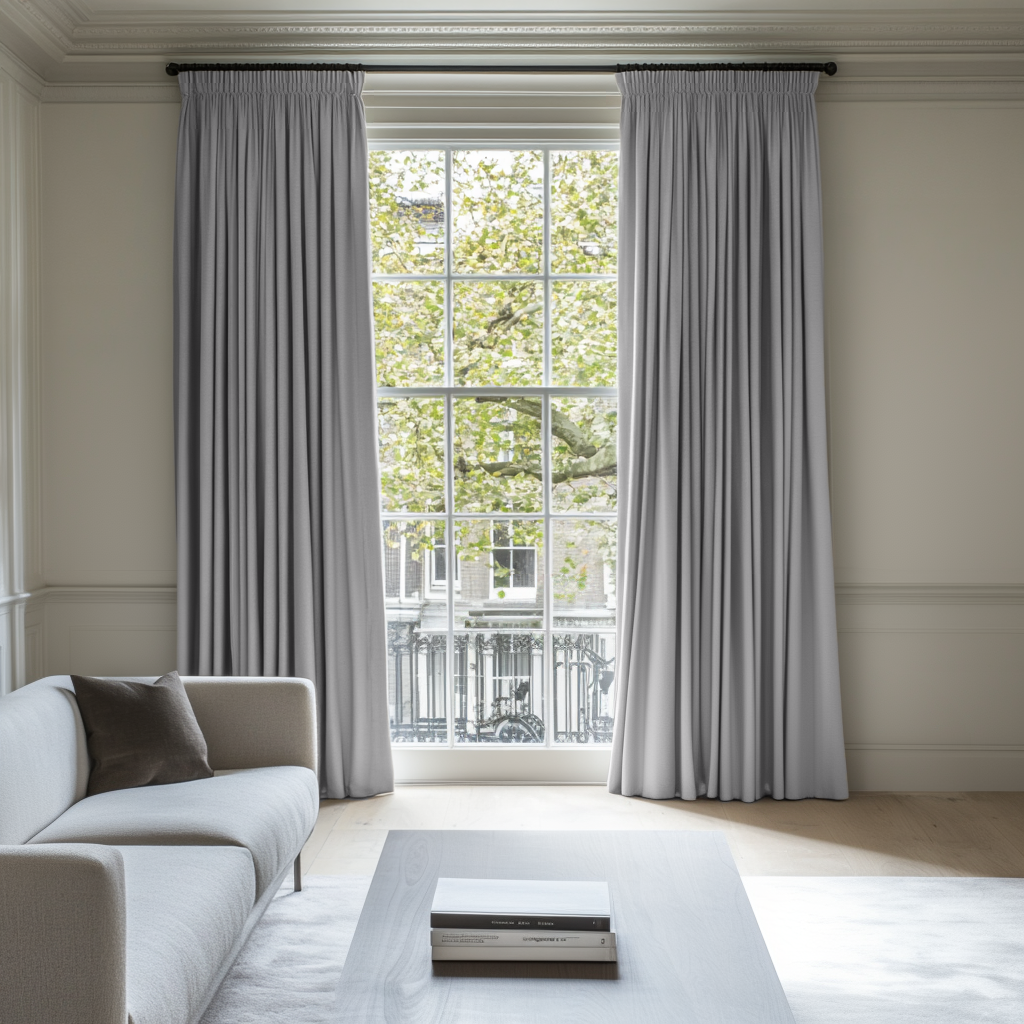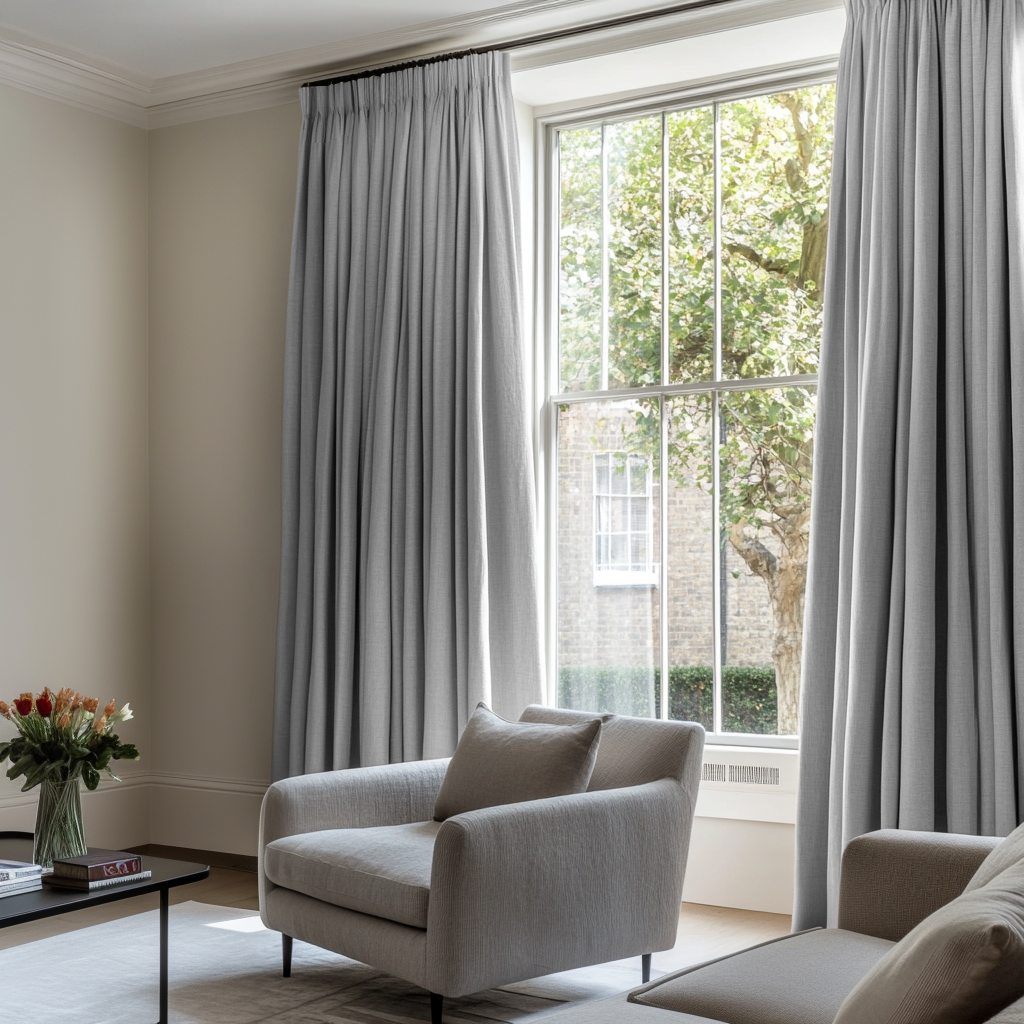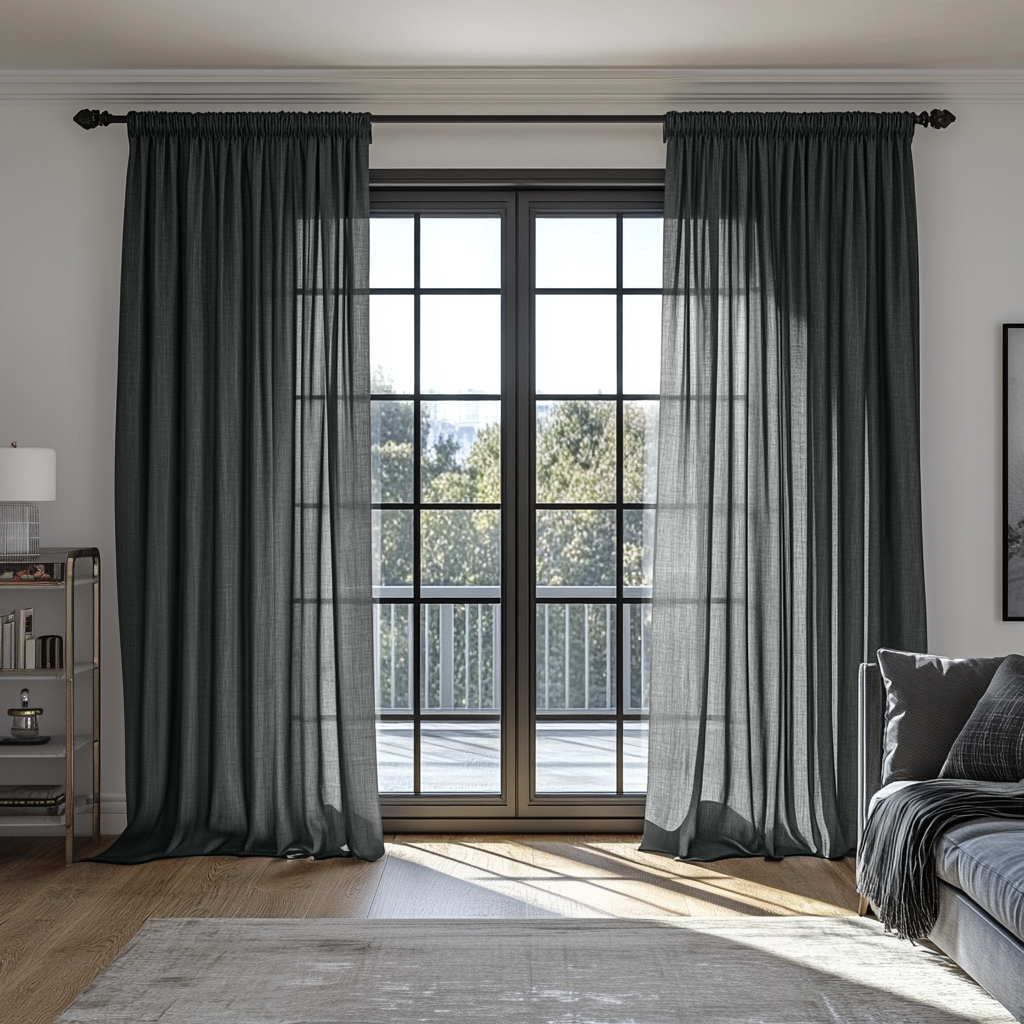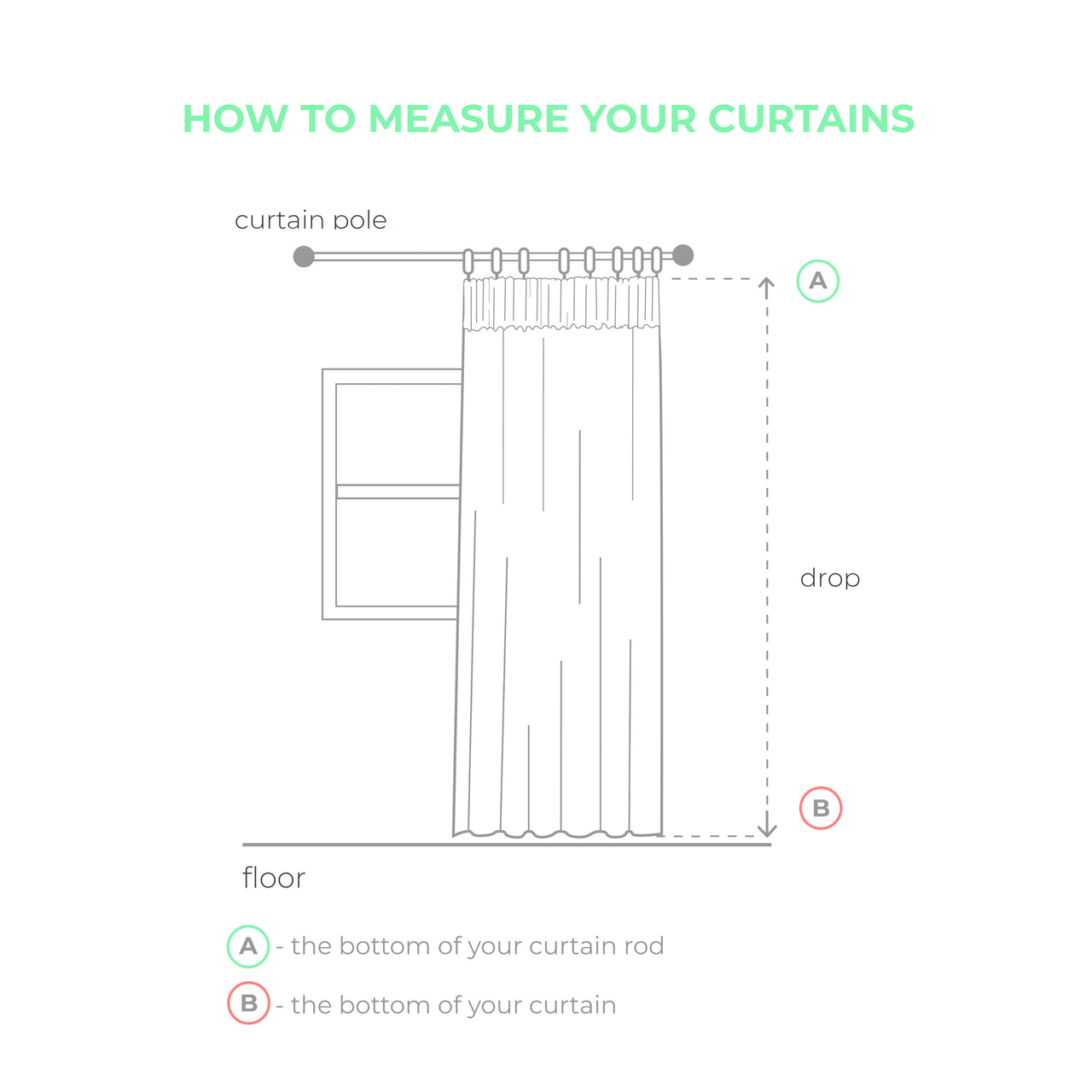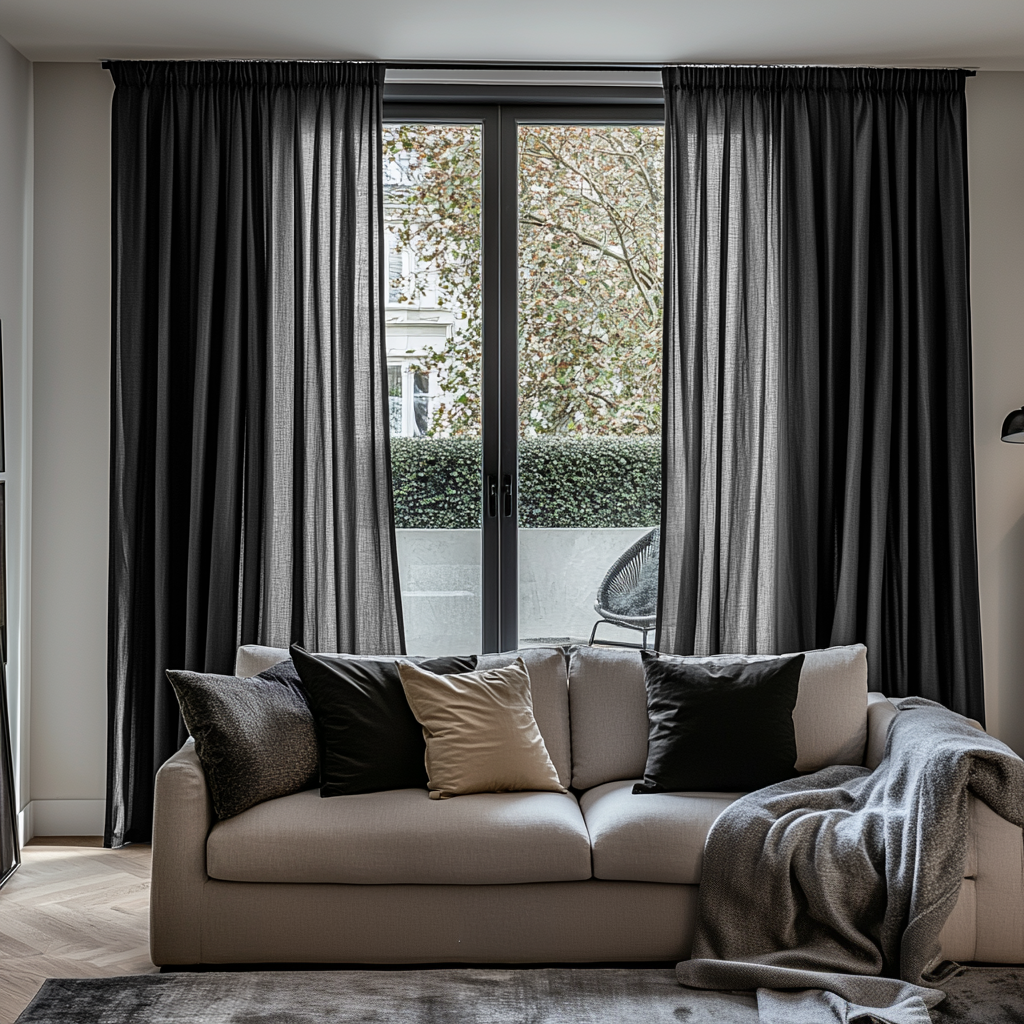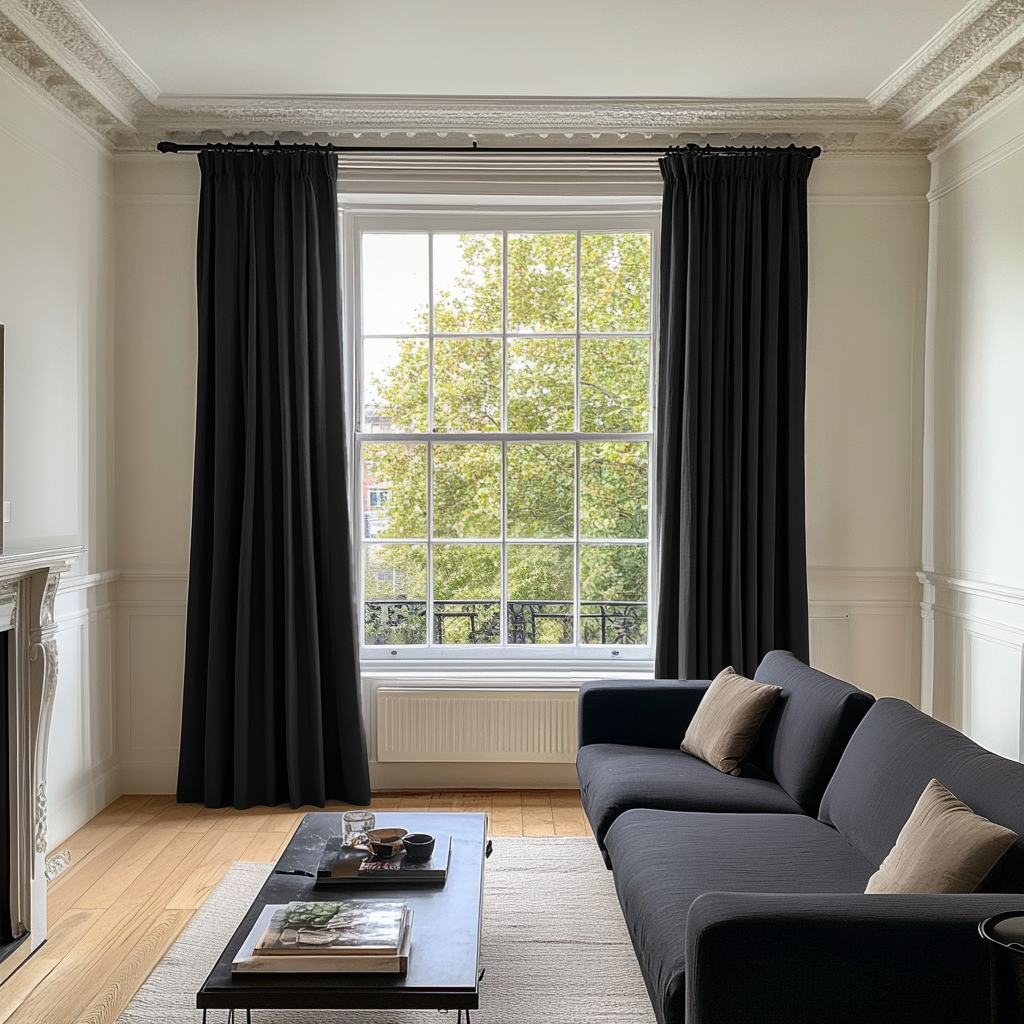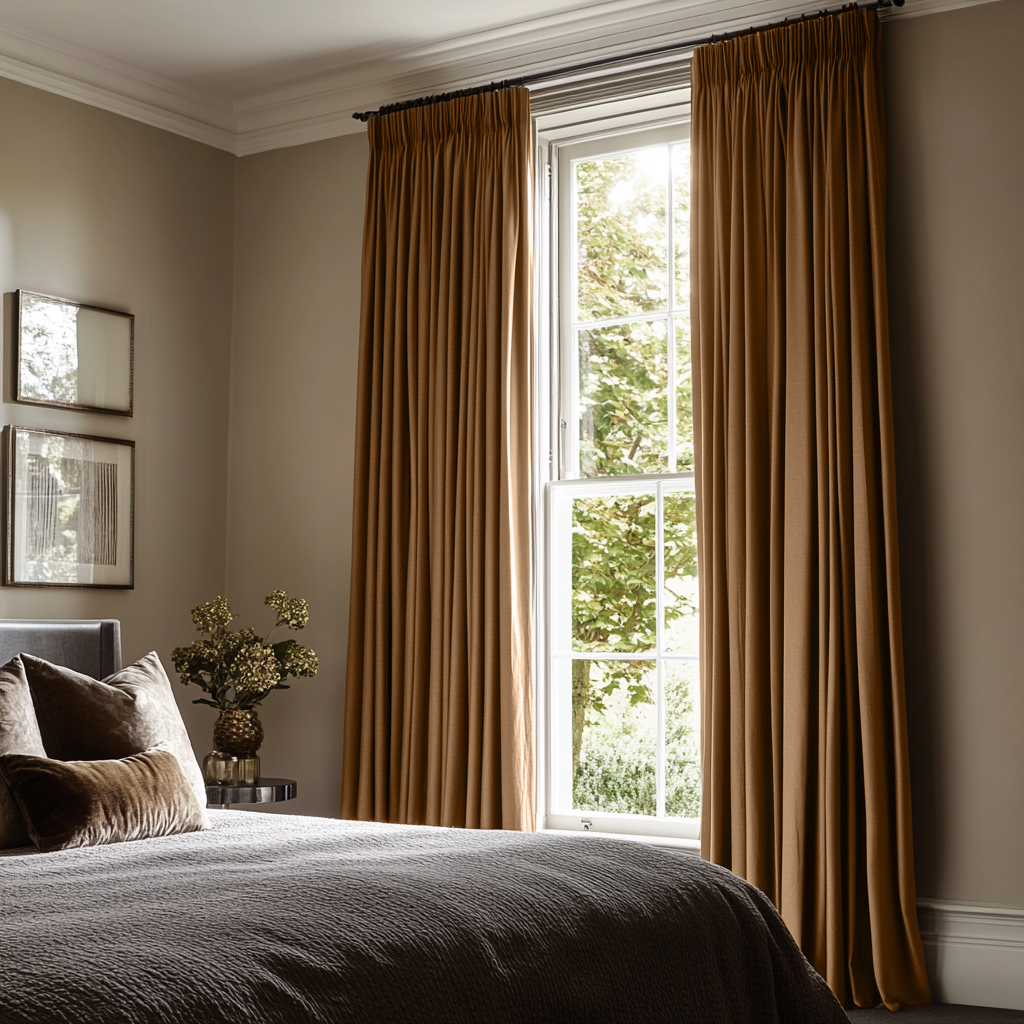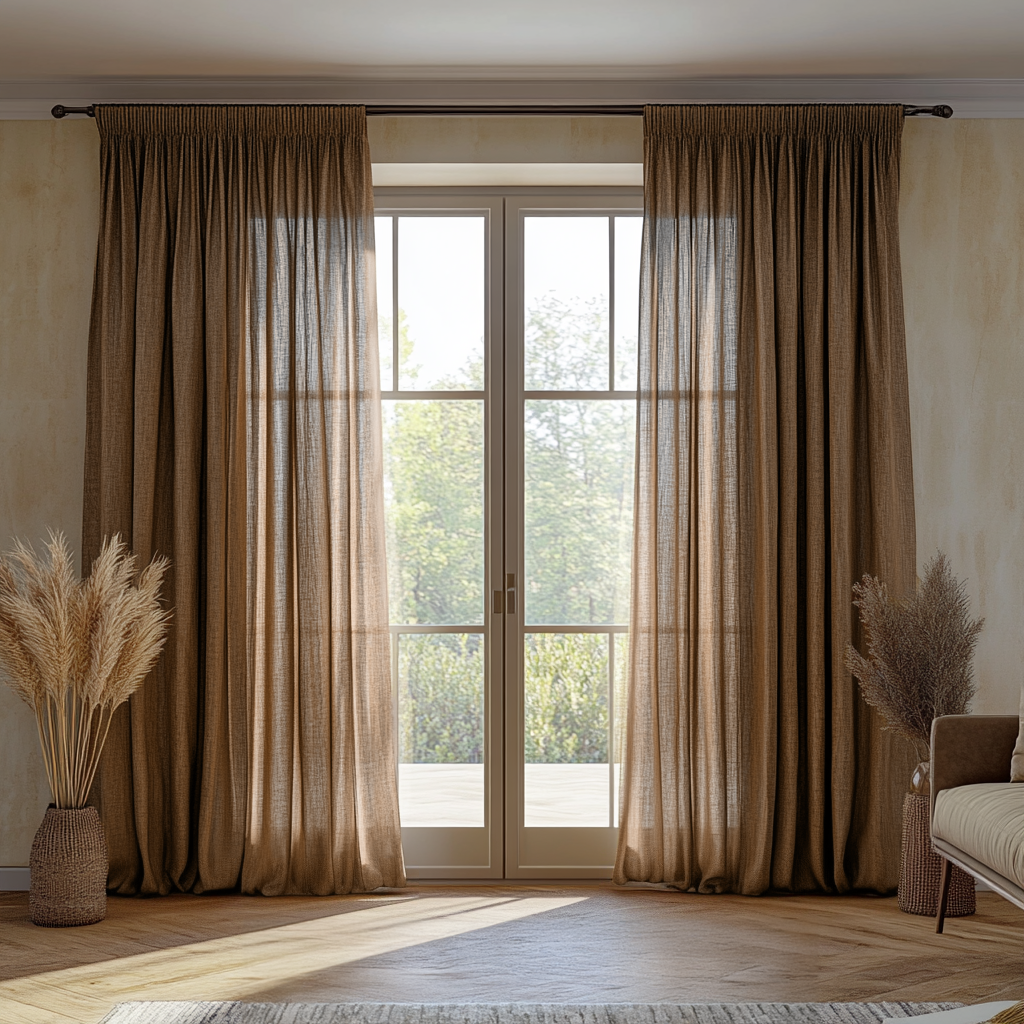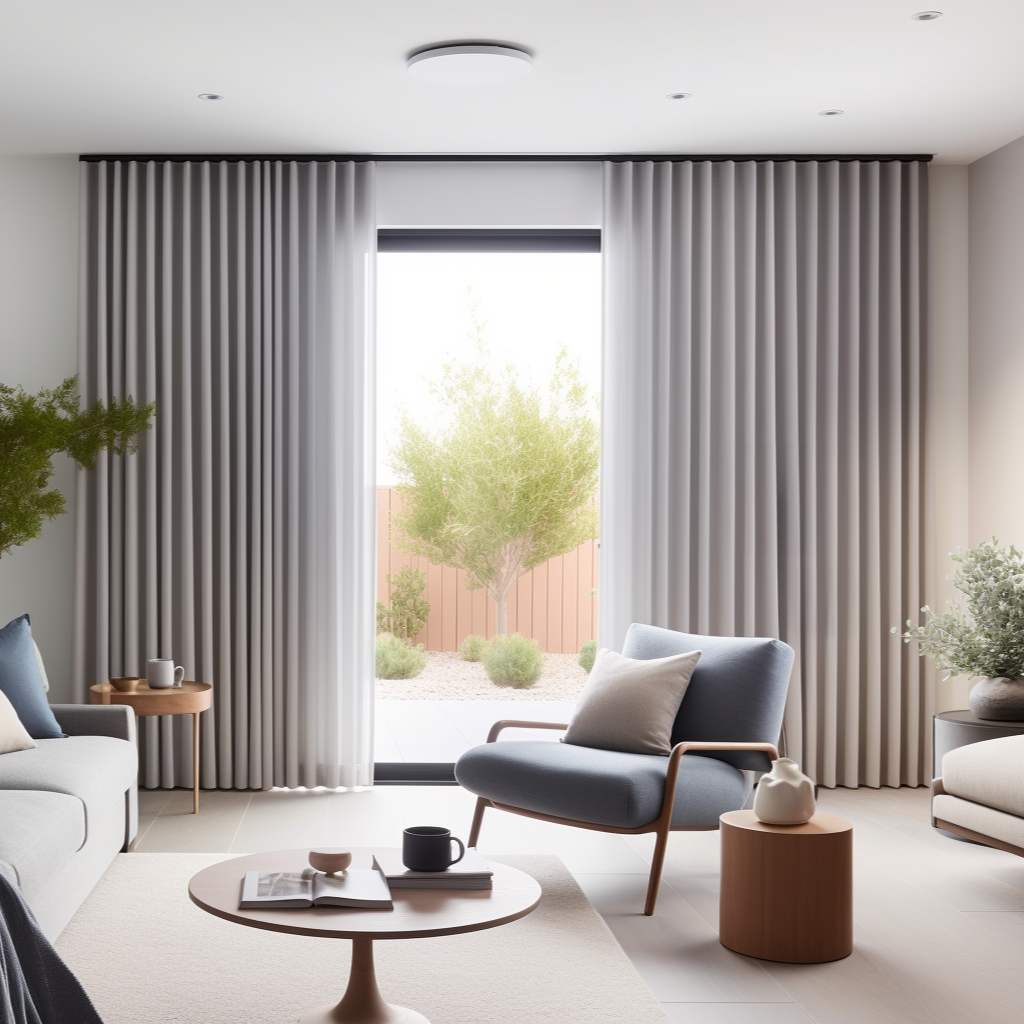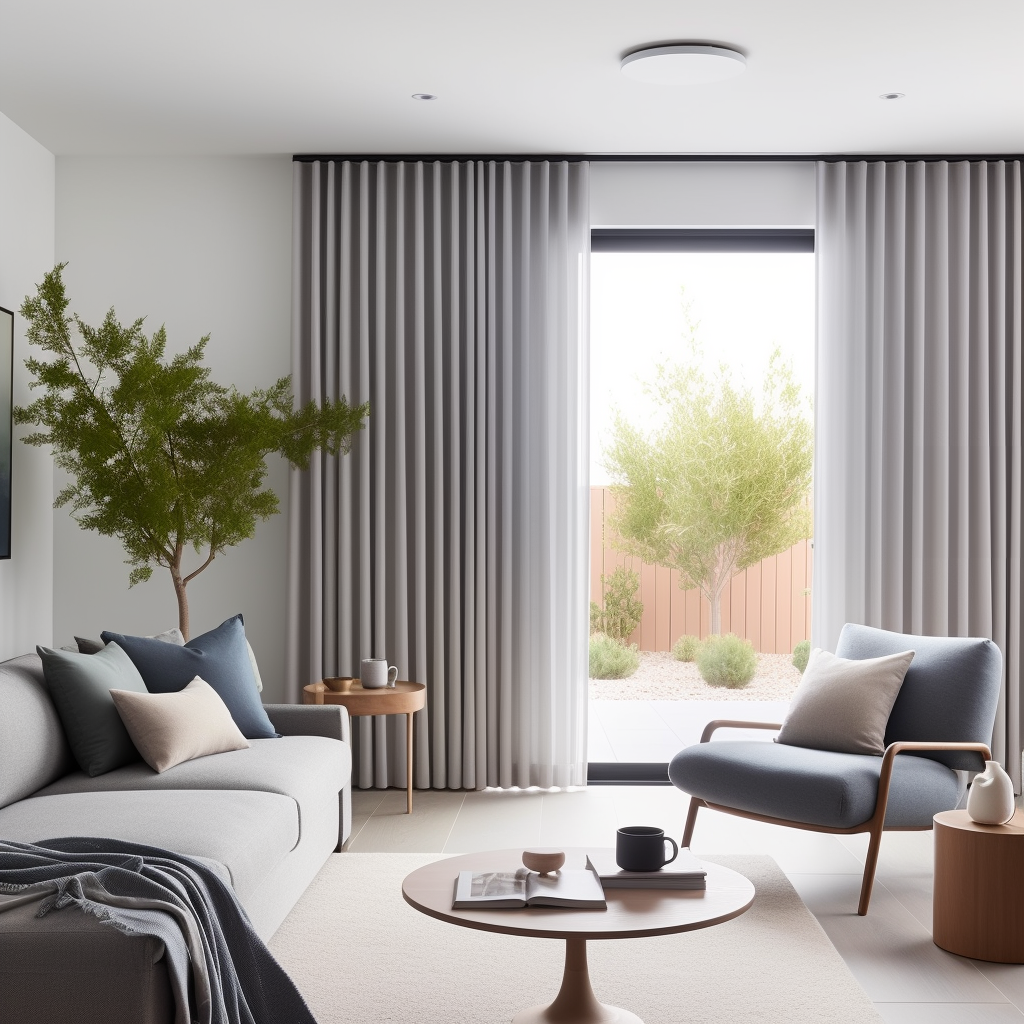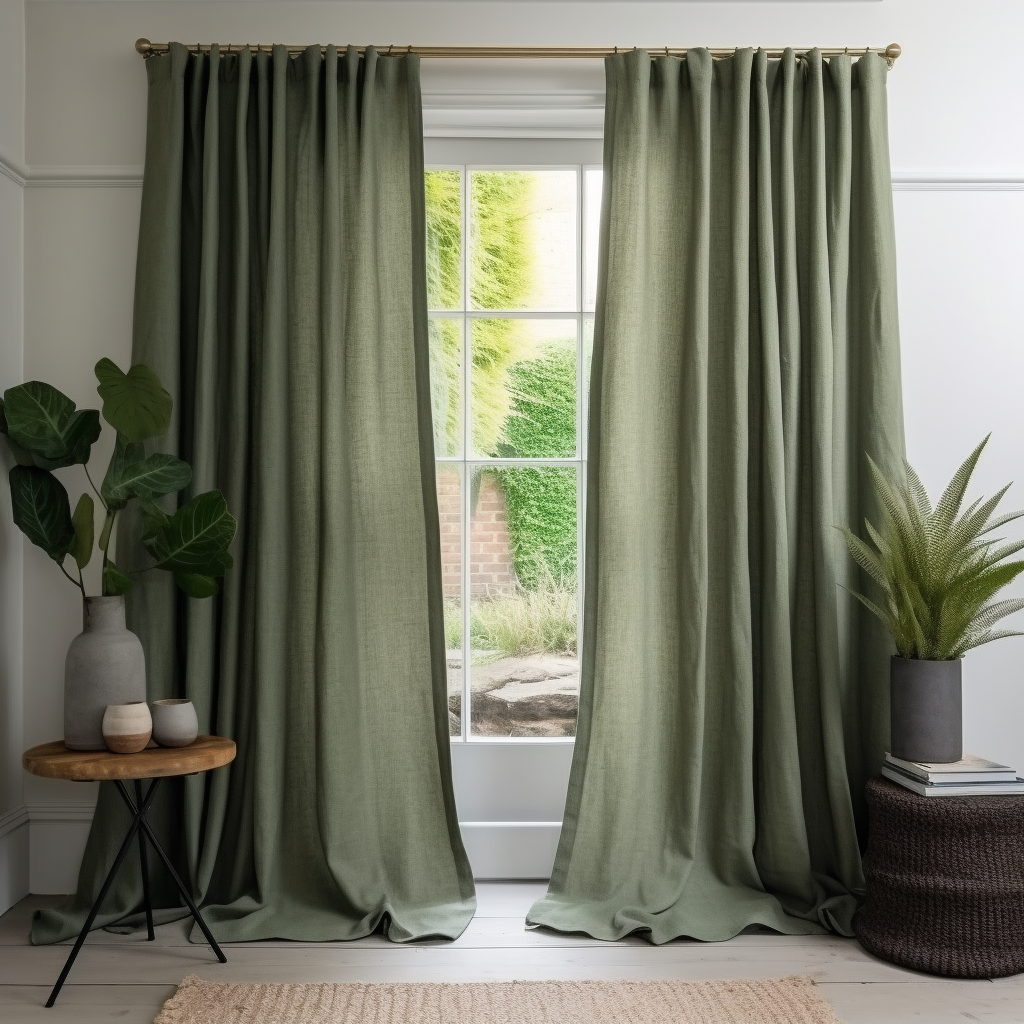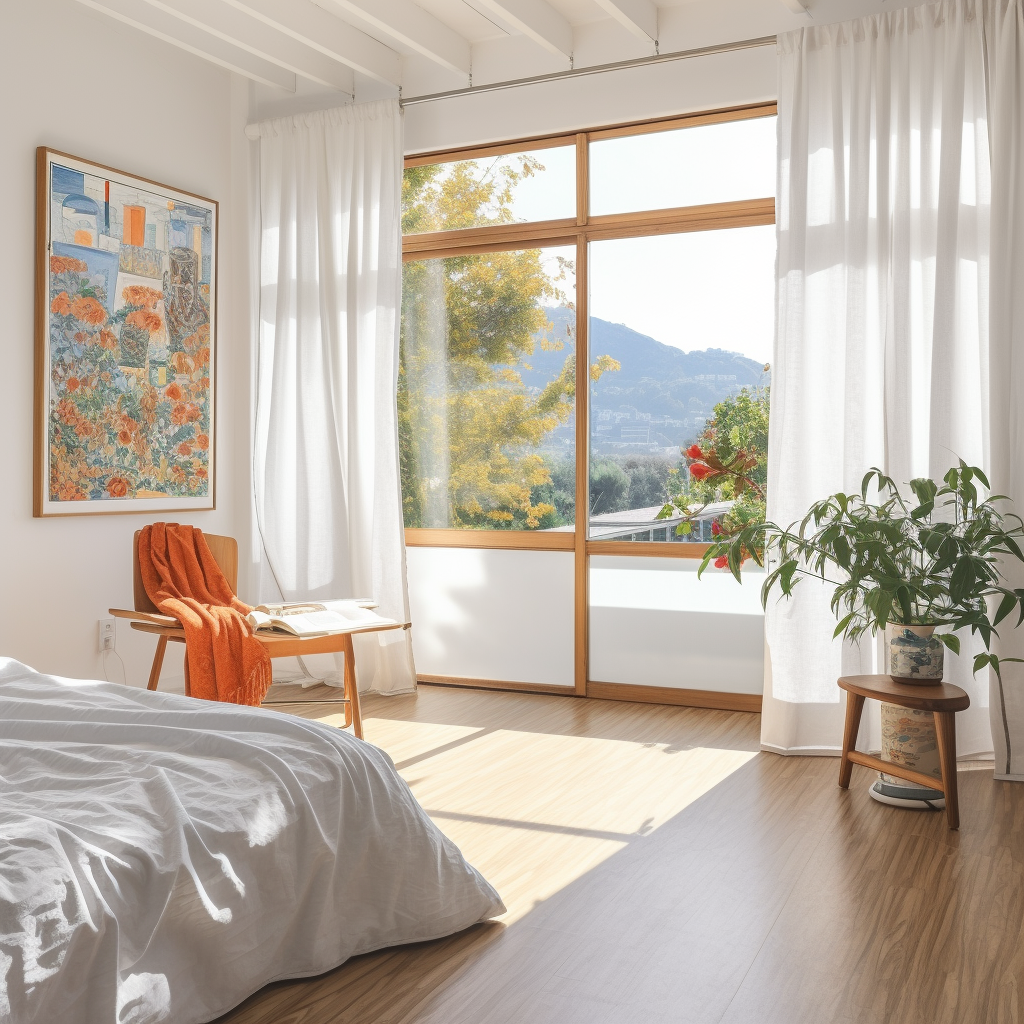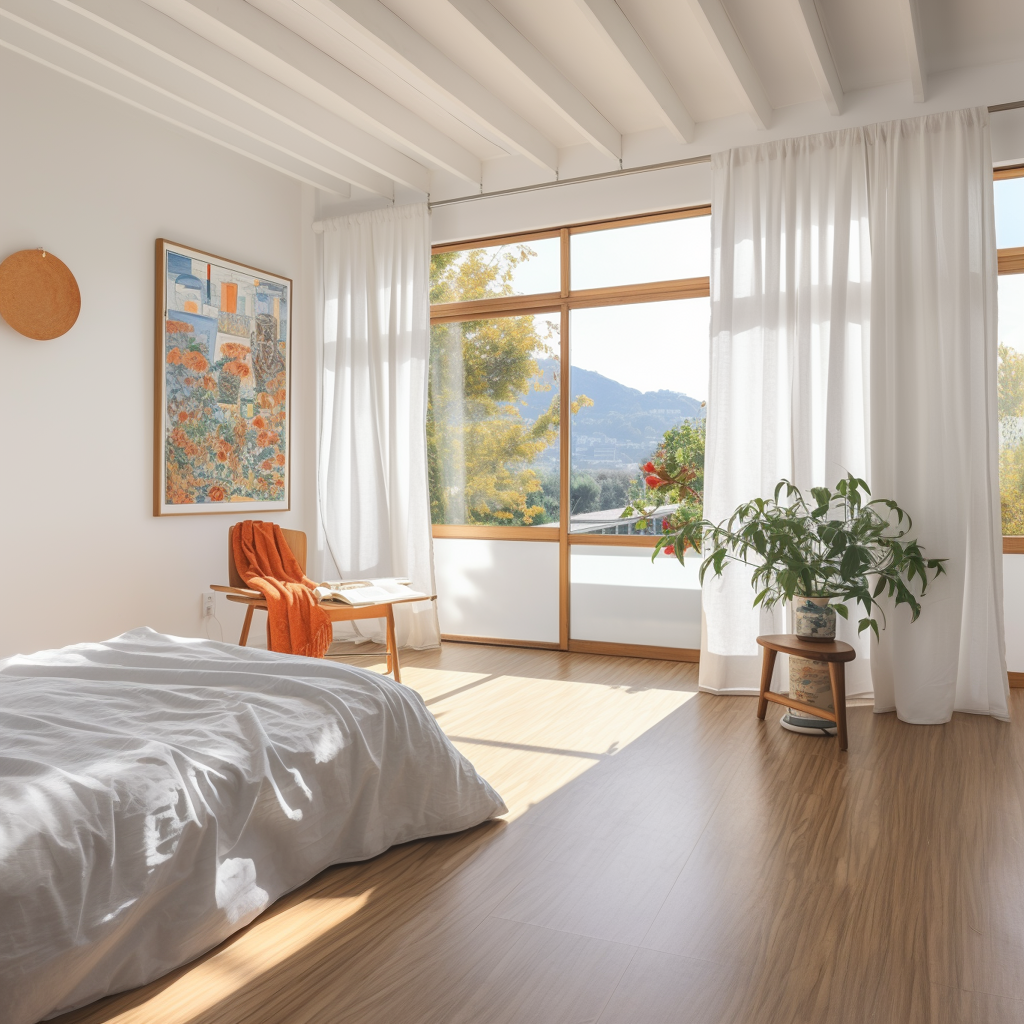Is Linen Good For Curtains?
Yes, linen is a great option for curtains in Australian homes, especially given the climate. Here’s why:
Breathable and Cool:
Flax linen is a lightweight natural fabric that breathes well and makes perfect curtains for the warmer Australian climate. A sheer linen panel helps keep rooms cool and free from mildew by allowing air circulation while still providing light control and some insulation in the cooler months of winter.
Light Filtering:
Linen curtain has a soft, airy quality that lets in natural light without making a room too bright or exposed. French linen curtains bring a relaxed, open atmosphere to your home.
Durable:
A natural linen curtain made from flax is strong and can withstand the harsh Australian sun better than some synthetic fabrics. Linen is long-lasting, so all linen curtain styles work well to provide a beautiful drape in homes where curtains might be exposed to strong sunlight.
Sustainable:
Linen is a natural fabric made from flax, and linen curtains are eco-friendly, which aligns with Australia's increasing focus on sustainability and environmentally conscious choices. Linen gets more soft after they are washed and gets softer after every wash.
Elegant but Relaxed Look:
Natural linen rod pocket curtains give a laid-back, casual vibe as compared to other fabrics, the perfect hang for the coastal or modern Australian home. The soft texture and slight wrinkles of luxury linen curtains add elegance and character to contemporary bedrooms, making linen a stylish choice for many interiors.
Easy to Maintain:
A flax linen curtain is easy to hang and care for, often machine washable, and can be ironed or left slightly wrinkled for a more relaxed look. It is always advised to wash linen curtains using a gentle machine cycle, avoid bleach, and line-dry them to maintain the linen quality, elegance, and shape.
In humid areas, linen curtains’ moisture-absorbing properties are helpful, but you might want to opt for a blend or linen-look curtains if you want less wrinkling.
Do Linen Curtains Attract Dust?
Linen curtains, like most curtains, can attract dust, but they aren’t particularly worse than other materials. Here’s how linen fares in Australian homes:
Natural Fabric:
Natural linen is made from flax, a natural fiber, which means a linen curtain doesn’t attract static electricity. This reduces the likelihood of it pulling in dust compared to any synthetic textile like polyester.
Breathable and Airy:
Because a natural linen curtain is lightweight and breathable, it doesn’t trap dust as much as thicker, denser material curtains might. The airflow around linen curtains helps disperse particles more easily.
Easy to Clean:
Linen is a sustainable fabric, and a linen curtain is very easy to care for. Whether you have sheer linen curtains or heavier varieties, if dust does build up, most linen curtains and linen bedding are machine washable with a gentle cycle or can be vacuumed to keep them fresh and clean.
Moisture-Wicking:
Natural linen curtains naturally absorb moisture, which can help in more humid parts of Australia. This feature may reduce static buildup in a space, which in turn reduces dust attraction.
In general, dust will settle on most types of curtains over time, but with a sheer linen curtain, regular cleaning is easy, and the natural fibres of the curtains tend to attract less dust than synthetic materials.
Are Linen Curtains Expensive?
Linen curtains can be more expensive than some other fabric options. Still, the price varies depending on factors like curtains quality, colours, and whether you choose a pure linen curtain or a linen blend panel for your room. Here’s what Australians should consider for their space:
Natural Fiber:
Flax linen is a premium, lightweight, natural fabric crafted from flax plant, which can make it more costly compared to synthetic materials like polyester or cotton blends for bedroom windows. However, many Australians value pure linen curtains for their non-absorbent nature, eco-friendliness, and sustainability. Additionally, sheer linen curtains with decorative ties on a window add a charming, functional element to a room, enhancing the curtains' appeal for both style and practicality.
Durability:
A flax linen curtain is long-lasting and durable, especially when exposed to Australia’s strong sunlight. Though you might pay more upfront, pure linen curtains from a quality collection can be a good investment because they tend to wear well over time.
Blends vs. Pure Linen:
If you're looking for a more budget-friendly option to shop for, then linen-look curtains or linen-blend curtains are typically less expensive than a 100% linen curtain or panel. These tailored linen-look curtains of beautiful colours and patterns often create and maintain the look and feel of a linen panel in a space but at a lower price point.
Style and Timelessness:
A flax linen curtain has a timeless, light, and elegant look that complements many windows of Australian home decor and styles, from coastal to modern. Linen’s aesthetic appeal style, easy installation, and diverse colours can justify the higher cost for many homeowners.
Sustainable Choice:
Given Australia’s growing focus on sustainability, the high range of environmental benefits of a linen curtain (linen is biodegradable and requires less water to produce) may make the price higher. It can make all the difference for eco-conscious buyers.
In short, while french linen curtains in neutral shades like beige may be pricier than some alternatives for a window, they offer a high range of durability, colours, style, and sustainability, making linen curtains a worthwhile investment for a window for many Australian homemakers.



